April 5, 2013
Air Date: April 5, 2013
FULL SHOW
SEGMENTS
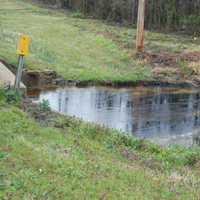
Arkansas's Oil Pipeline Disaster
View the page for this story
A pipeline that links Canada's tar sands with the Gulf coast ruptured in the rural community of Mayflower, Arkansas. Host Steve Curwood talks to Mayflower resident Becky Naylor about the spill and the clean up effort. (04:55)
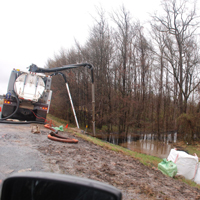
The Cleanup, the Media and ExxonMobil
View the page for this story
EPA is the federal agency overseeing the Mayflower oil spill clean up but media inquiries are funneled through Exxon. Reporter Lisa Song tells host Steve Curwood about the challenges of reporting on the spill. (02:45)
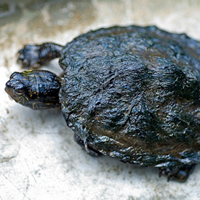
Petition to Regulate Tar sands Oil Pipelines
View the page for this story
The pipeline that broke in Mayflower, Arkansas was carrying crude oil but bitumen from Canada's tar sands. It has the consistency of peanut butter. Jim Murphy from National Wildlife Federation tells host Steve Curwood about a petition before EPA for a moratorium on new or expanded bitumen pipelines until there are tighter regulations for transporting bitumen. (06:00)
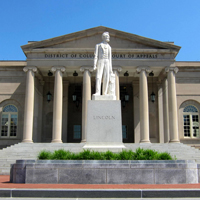
High Court for the Environment
View the page for this story
President Obama has pledged to take on climate change, but vacancies on the DC Court of Appeals may make that difficult. This court has a Republican majority and rules on many environmental regulations. Host Steve Curwood speaks with University of Texas Law Professor Tom McGarity about this obstacle to environmental rule-making. Case in point: the court recently ruled against the Federal Energy Regulatory Commission in a matter involving the ExxonMobil pipeline that ruptured on March 29, 2013 in Arkansas. (06:15)
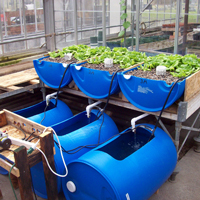
Fish Farm Food or Dog Treats?
/ Bobby BascombView the page for this story
Living on Earth celebrates Earth month in April by taking a look back at a Living on Earth story, then catching up with our sources for an update. This week we hear Bobby Bascomb’s report about using leftovers from a college cafeteria as a source of food for fish grown in an aquaponic system, and hear how the project has developed. (09:30)
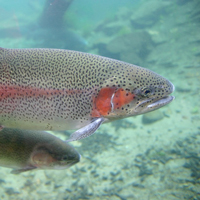
Trout Are Speaking
/ Mark Seth LenderView the page for this story
Writer Mark Seth Lender contemplates rainbow trout in a crystal clear British Columbia Stream, and finds they seem to be contemplating him in return. (02:05)
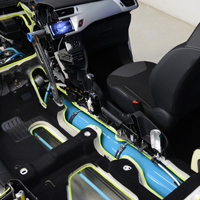
New Hybrid Car Runs on Air
View the page for this story
French car company Peugeot has created a new hybrid car that could be twice as efficient and half as pricy as traditional battery hybrids. The secret? It runs on compressed air. Peugeot engineer Karim Mokaddem talks about the technology with host Steve Curwood. (06:15)
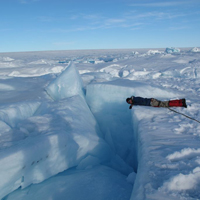
Greenland Melt Music
/ Emmett FitzGeraldView the page for this story
Greenland's 2012 summer ice melt was the largest on record. Ice specialist Marco Tedesco visits Greenland every year, and, tired of trying to convey the science of the melting ice with graphs and statistics, he found someone who could turn his data into music. Living on Earth’s Emmett FitzGerald has the story. (07:40)
Show Credits and Funders
Show Transcript
Host: Steve Curwood
Guests: Becky Naylor, Jim Murphy, Tom McGarity, Michael Amadori, Karim Mokaddem
Reporters: Lisa Song, Emmett FitzGerald, Bobby Bascomb, Mark Seth Lender
[THEME]
CURWOOD: From Public Radio International, this is Living on Earth. I'm Steve Curwood.
Thick, heavy oil from Alberta’s tar sands has spilled from an Exxon pipeline in the small rural town of Mayflower, Arkansas, fouling lawns and waterways.
NAYLOR: It looks like black mud. It's horrible. The smell is horrendous. We've been through tornadoes, we've been through fires, we've been through a lot of things, but nothing like this right here - this is something we're not familiar with.
CURWOOD: There's a call for tighter pipeline regulation. Also, using music to explain Greenland's melting ice sheets...
PERL: When you take the time to actually listen to it, you experience what's actually happening in a way that is more visceral, and has a different kind of impact then if you just look at a graph.
CURWOOD: Art in partnership with science. We'll have that and more this week on Living on Earth. Stick around.
[THEME]
ANNOUNCER: Funding for Living on Earth comes from Stonyfield Farm, makers of organic smoothies, yogurt, and more.
Arkansas's Oil Pipeline Disaster
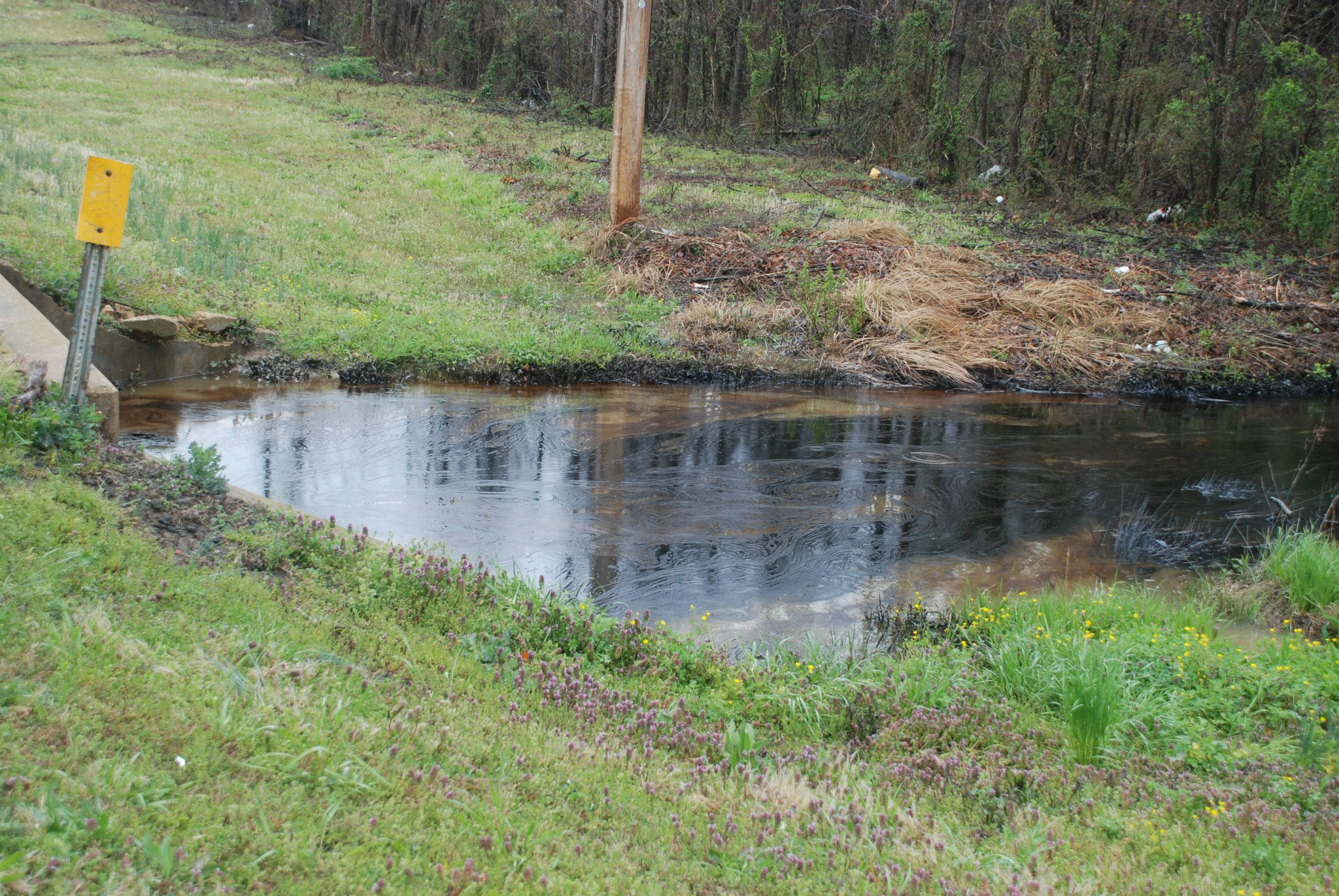
(Mayflower, Arkansas oil spill facebook page)
CURWOOD: From the Jennifer and Ted Stanley Studios in Boston, this is Living on Earth. I’m Steve Curwood.
Oil spill. Exxon. Those words seem to be from a movie that we’ve seen before. And this time, the small rural town of Mayflower, Arkansas is playing an unwelcome leading role. Mobil built the Pegasus Pipeline sixty-five years ago to bring crude north from Port Arthur on the Gulf Coast to a refinery in Illinois. Seven years ago, Exxon Mobil won approval from the government to reverse that flow and link up with pipelines owned by Enbridge and the Koch brothers to carry Canadian tar sands crude south.
We will have more on the controversy over the economics and safety of pipelines later in the broadcast, but first let’s go to Mayflower, a little town 20 odd miles north of Little Rock where the Exxon pipeline ruptured and dumped thousands of gallons of the sticky crude into its creeks and on its lawns. Becky Naylor is a local resident of this town of 2,000 and works in a garden shop. Welcome to the program.
NAYLOR: Thank you.
CURWOOD: So how long have you lived in Mayflower?
NAYLOR: I’m a lifetime resident. We’re seven generations in this community. I’m 57 years old and was brought home from the hospital here. I’ve been here everyday since, never lived anywhere else. I have seven sisters and three brother, and we all live here in this one community.
CURWOOD: What’s the first you ever heard of this pipeline through your community?
NAYLOR: My husband’s land that we live on, they’ve had that for over 100 years in the family, and that pipeline come through during his grandfather’s time, when he was alive. It runs across the backside of our property where it blowed up at was about 500 feet, maybe more, right behind us and off to an angle.
CURWOOD: Oh, what does it look like?
NAYLOR: It looks like black mud. It’s horrible. The smell is horrendous. Now the smell has gone down a lot since they’ve cleaned and gotten it out of there. But on the days it’s not raining and it gets a little warm, it would almost take your breath away.
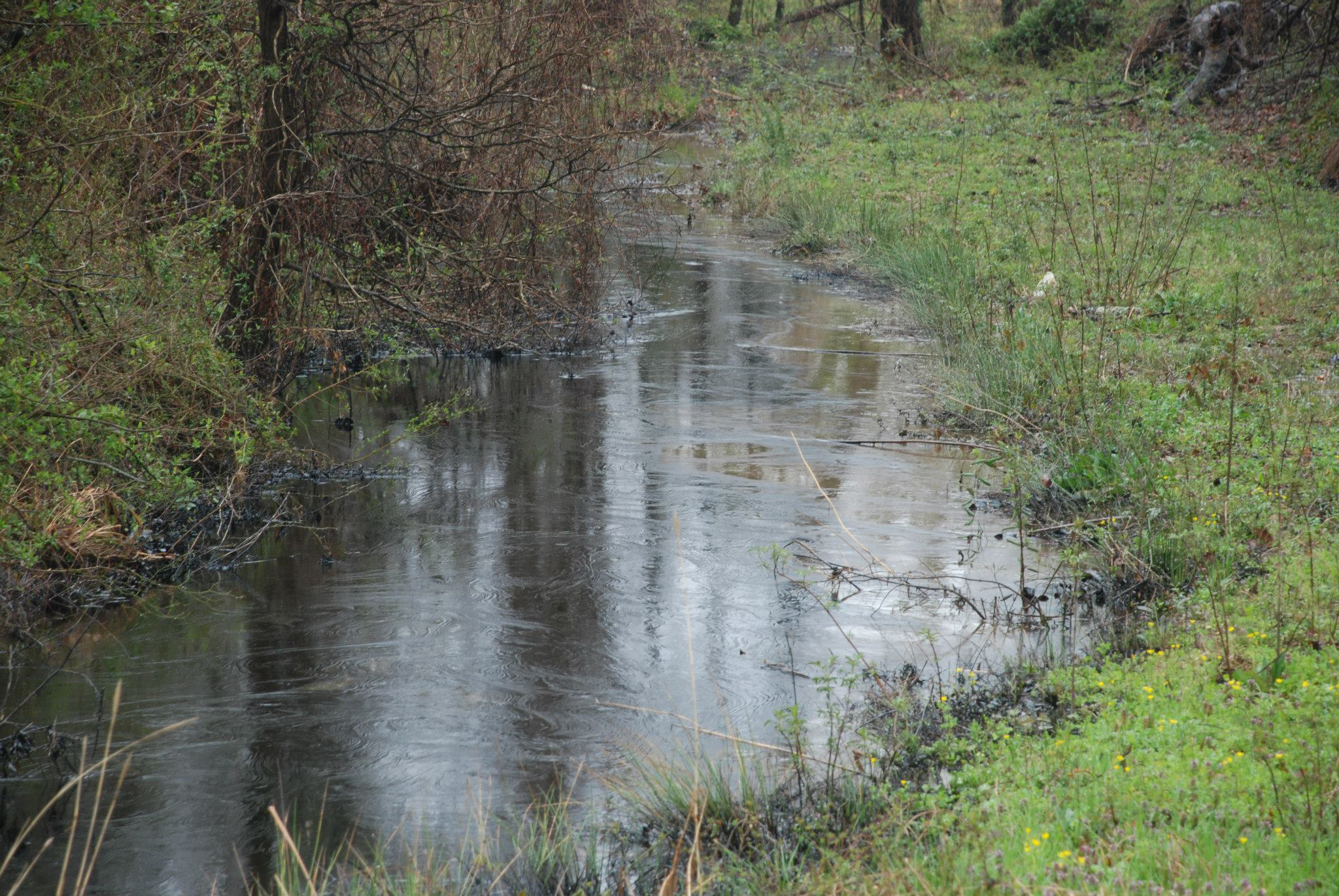
(Mayflower, Arkansas oil spill facebook page)
CURWOOD: When did you first know something had gone wrong?
NAYLOR: Well, that afternoon, we heard lots of sirens. And of course being a small town, everybody wants to know what all the sirens are about. And then we started getting phone calls, each people...you know, everybody ran once they started calling one another, letting them know they had a break in the pipeline that runs through the back. So naturally, we went back and looked at our property and there was nothing back there but the smell.
CURWOOD: I imagine so. Now, what has the spill meant for the town of Mayflower so far?
NAYLOR: Well, it’s pulled us all together, and thank God for the people that are on our city council, our mayor and our county judge. They’re all from this area. They knew where the creek went, and where they come out at, and where they were heading toward the lake. And Jimmy Joe Johnson automatically told them, “hey, this is going to empty over here right by the side of the lake if we don’t get to it.” So in 10 minutes, they were dumping sand and gravel to block it, to keep it from going into Lake Conway.
CURWOOD: And that’s a big place where you can boat, fish, and I suppose hunt a little too?
NAYLOR: Oh, yes. It’s a wonderful lake to fish on. There’s bass, there’s crappie, catfish...a lot of bass fishermen go over there.
CURWOOD: So how’s this for the wildlife there?
NAYLOR: They have found a few things. I know they found some ducks that were covered in oil. They found some turtles. They found a big old muskrat and different things like that. But they have got them cleaned up.
CURWOOD: So, you’ve probably never been through this before.
NAYLOR: Oh, no. We’ve been through tornadoes, we’ve been through fires, we’ve been through a lot of things, but nothing like this right here. We’ve even had 100-year-floods we’ve had to deal with down on our farm that hasn’t been there for over 100 years and moving equipment and helping neighbors move their cattle and things. But this is something we’re not familiar with to know what to do.
CURWOOD: Just wondering if this experience has you thinking all this movement of oil and risks of pipelines because we are so dependent on oil.
NAYLOR: Well, it does make you stop and think, but we spoilt ourselves to our vehicles needing oil and gas...and it’s something we’re going to have to check into to make it safer. That’s what I’m going to leave to my people I elect into office to take care of. But it’s something we’re going to have to have and we’re going to have to live with. There is some sacrifice for those privileges we have.
CURWOOD: Becky Naylor is a lifetime resident of Mayflower, Arkansas. Thank you so much, Becky!
NAYLOR: Thank you. You all keep us in your prayers, OK?
CURWOOD: We will. And likewise.
NAYLOR: Thank you.
Related link:
More about Mayflower, Arkansas
The Cleanup, the Media and ExxonMobil
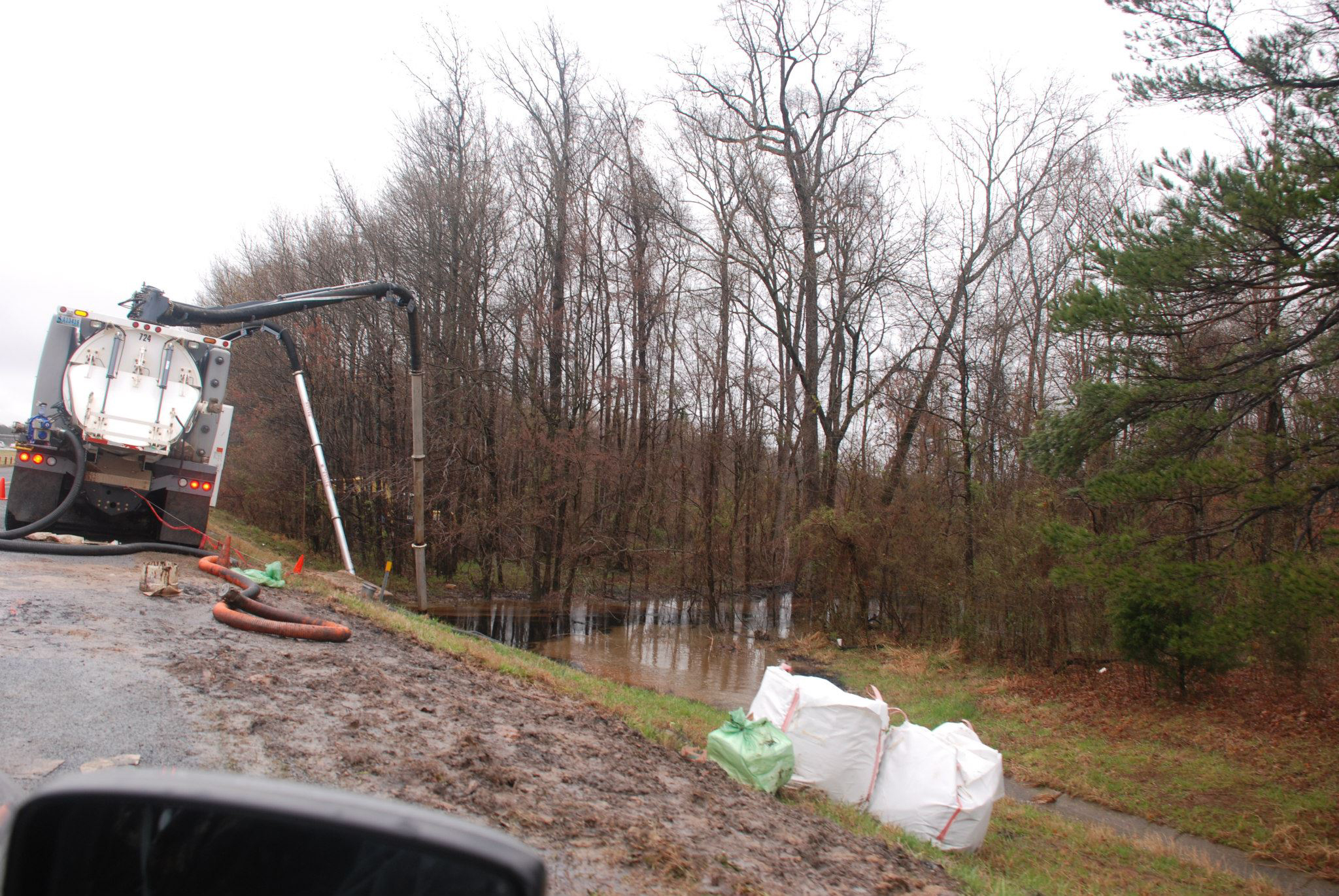
(Mayflower, Arkansas oil spill facebook page)
CURWOOD: We turn now to Lisa Song, a reporter for Inside Climate News who's on the scene. Welcome, Lisa, what's going on there?
SONG: They have a lot of cleanup crews here. Everywhere you go, you see trucks and people in hard hats, reflective orange and yellow vests. There are a lot of contractors here. Exxon said they have 120 of their employees working on the cleanup. There are lots of local, federal and state agencies also working here, so there’s a lot of activity.
CURWOOD: How do you clean up this diluted bitumen? What do you do to remove this stuff from the environment?
SONG: What I’ve seen is that they have trucks pumping oil out of the creek. There’s at least one small creek where there’s oil in it. They have set up booms along the creek to prevent it from getting into Lake Conway, which is a big recreational area, and they have set up dams to prevent the oil from flowing into the lake, and so far it’s been successful. When the oil is on the grass, they have these absorbant pads they put down to pick up the oil.
CURWOOD: That doesn’t sound more sophisticated than me grabbing a paper towel for something that spilled on my kitchen floor.
SONG: [LAUGHS] Yeah. I’m not sure if there are other more sophisticated techniques they’re using, but I haven’t seen them so far.
CURWOOD: Now, I gather that most residents had no idea there was a pipeline there.
SONG: Yes, I’ve spoken with a few residents, and a lot of them say they didn’t know there was an oil pipeline in their neighborhood - basically in their backyard. Some of them were sort of aware of it, didn’t really know much about it.
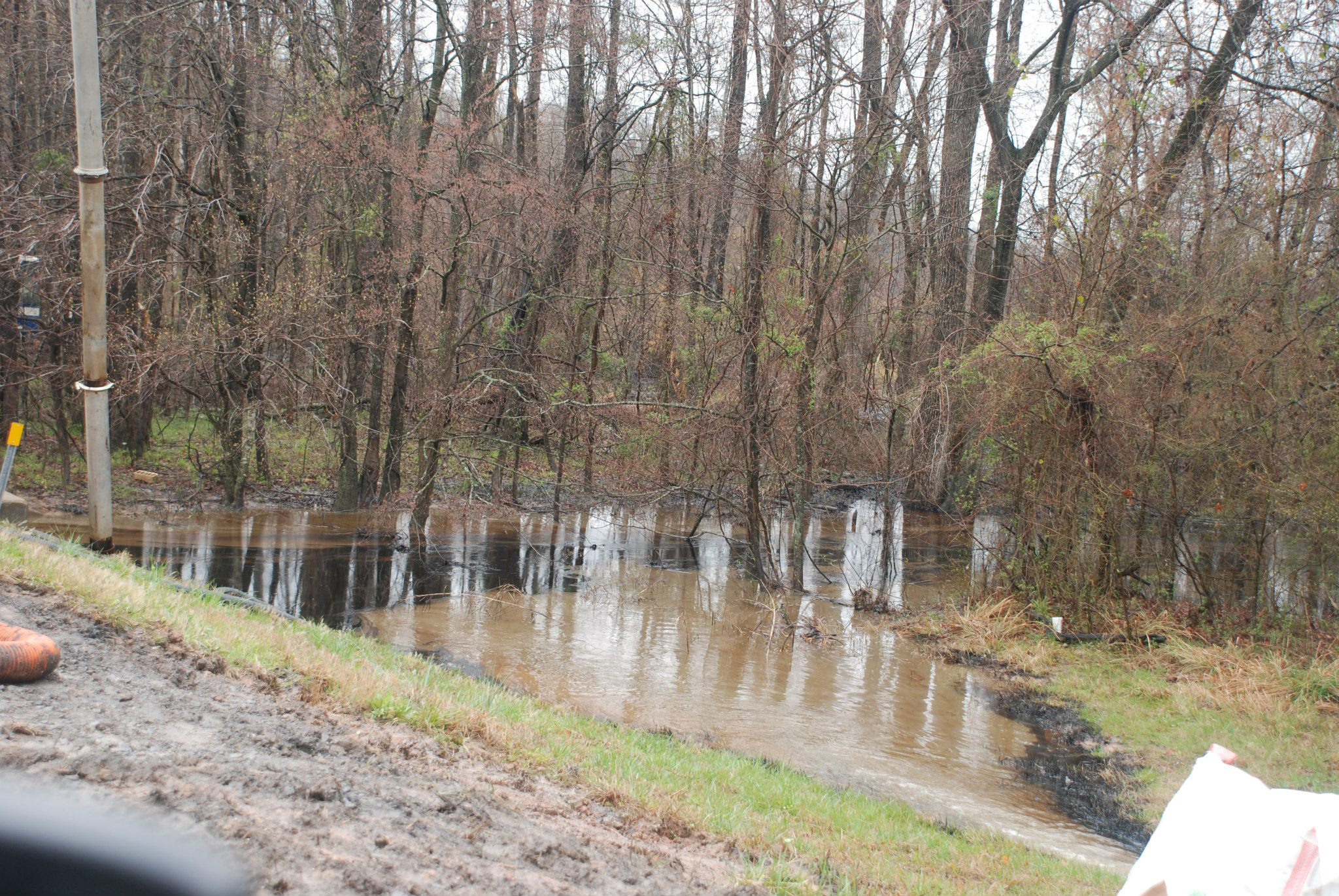
(Mayflower, Arkansas oil spill facebook page)
CURWOOD: So, Exxon, which operates this - they’re responsible for this pipeline - how much media access are you getting?
SONG: Very little. They have set up a unified command center where basically all the government agencies and Exxon are gathered in this building, and they have maps, they’re planning the cleanup, all of that, but media are not allowed inside the building. I spoke with the security guard and I asked to talk to someone inside the building who represents the federal government. And the person who came out was an Exxon spokeswoman.
CURWOOD: Wait. So you asked for a federal representative and they gave you an Exxon person?
SONG: They gave me an Exxon spokeswoman.
CURWOOD: Now when we tried to reach out to the federal officials by telephone, we got connected to Exxon.
SONG: Yes, that’s the other thing. The official phone number for the unified command center goes to Exxon’s public affairs office.
CURWOOD: Lisa Song is a reporter with InsideClimate News, on the scene there in Mayflower, Arkansas. Thank you so much, Lisa.
SONG: OK. Thanks.
Related links:
- ExxonMobil statements on the spill and cleanup
- More about Lisa Song and Inside Climate News
Petition to Regulate Tar sands Oil Pipelines
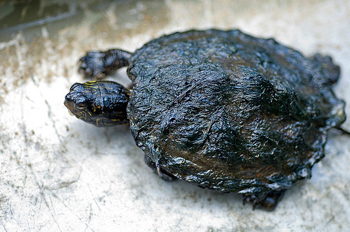
Tarred painted turtle from the Kalamazoo River. (Michigan DNR)
CURWOOD: Even before this latest spill, a coalition of landowners, environmental, and sportsmen’s groups had filed a petition with the federal government calling for a moratorium on new or expanded tar sands oil pipelines. The coalition wants Pipeline and Hazardous Materials Safety Administration (PHMSA) and the EPA to develop stronger safety standards. Jim Murphy of the National Wildlife Federation is the lead counsel. I asked him to explain why there needs to be new rules for pipelines that carry the thick tar sands oil - often called bitumen.
MURPHY: Unlike conventional crude, which is a liquid substance that generally floats on water and is easily pushed through a pipe, bitumen is much more - it's almost the consistency of peanut butter. So it doesn't travel through pipes easily. And to get it through pipes, one of two things have to occur. It either has to be refined down to a substance that resembles conventional crude - and that process is expensive and is also limited refining capacity in Alberta to do that.
So what they've been doing as production has increased is they dilute it with the natural gas condensate to create a substance called diluted bitumen. And basically, once it's diluted it can be pumped through pipes, but only at very high pressures of high temperatures. So there's several risks to that. One, it's going through pipelines in a much more intense way. The pressure and the heat likely causes corrosion issues and also the substance itself is really like liquid sandpaper.
So it’s a lot more wear and tear on the pipes. The other concern is when it spills. Rather than floating on water like oil does, what happens when diluted bitumen spills is the diluant, which is a natural gas condensate, will evaporate off quickly, causing a very toxic benzene cloud, and leaving behind a very heavy dense bitumen which will sink to the bottom, particularly of waterways. So traditional methods of cleaning, such as putting skimmers on, putting buoys on, and vacuuming on the surface of waters don't work. It attaches to the bottom. It’s very hard to clean up once it spills.
CURWOOD: So in 2010 there was a big spill of this diluted bitumen on the Kalamazoo River. What happened in that spill?
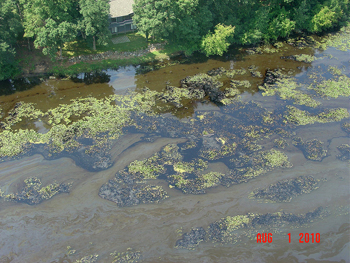
Tarred vegetation Kalamazoo River (EPA)
MURPHY: Basically there was a rupture that happened in a corroded or cracked part of the pipeline. It was known well before the actual rupture occurred. When the rupture occurred, the command center, which was in Alberta, read that drop in pressure not as a breach in the system, but as a gas bubble. So what happened is they started pumping oil in a much higher rate, at a much higher volume.
CURWOOD: Wait. So they started pushing more...
MURPHY: They pushed more through instead of shutting it off. So what happened was 17 hours went by from the time of the rupture to the time the company, which is Enbridge, actually started taking measures to stop it. About a million gallons of oil spilled. It entered a tributary of the Kalamazoo River, and ended up flowing down, fouling 40 miles of that river and in those 17 hours, 81 percent of that one million gallons were pumped after the initial breach.
CURWOOD: Local people saw that there was some kind of spill going on. What did they know about what was being spilled?
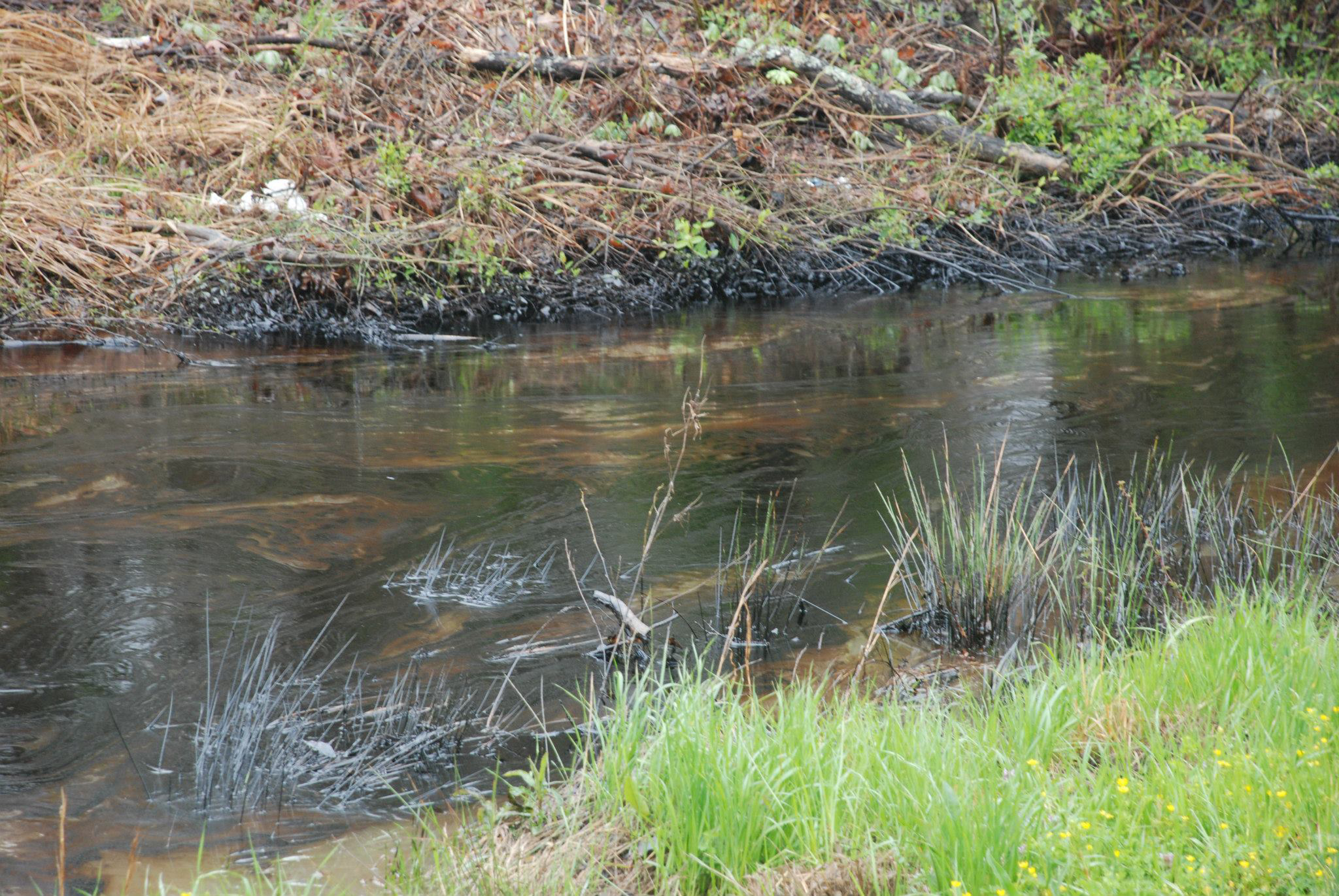
(Mayflower, Arkansas oil spill facebook page)
MURPHY: They had no idea that it was diluted bitumen. They are responded like they would've to conventional crude. They put skimmers and buoys on the water to try to collect what they thought would be floating oil. And the oil behaved very differently. It sank. It was rolling in tarballs on the bottom of the river. They were confused and frankly didn't know what they were responding to, and as a result of a lot of the oil fouled a good portion of the bottom of the river and wetland sediment as well.
CURWOOD: So it’s still there.
MURPHY: It's still there. They've dredged a few times. EPA has just ordered another dredging. EPA officials have basically said they think that portions of the river will be fouled indefinitely, but it really can't be restored or cleaned up.
CURWOOD: Your organization, National Wildlife Federation, is petitioning the Environmental Protection Agency for a moratorium on tar sands pipelines, including Keystone and those that carry bitumen. What exactly would like to see happen here?
MURPHY: We’d like to see a hold put in place on any new pipelines that carry tar sands or diluted bitumen. And we’d also like to see a hold put in place on any expanded use of existing pipelines, which is what happened in the recent Arkansas spill. That was an old pipeline carrying conventional crude and had been converted to diluted bitumen. And while that hold is occurring, we’d like to see the EPA put in regulations that deal with the very specific risks of carrying and responding to diluted bitumen.
CURWOOD: What happens next with your petition? This is not the sort of petition people just putting signatures around, this is a legal process you’ve engaged in.

National Wildlife Federation senior council, Jim Murphy (Jim Murphy)
MURPHY: Especially the agencies have to respond. They have to respond in a timely manner. They have to make a reasoned determination as to whether or not to accept or deny our request for a moratorium and for new regulations. And this is not without precedent. The very seminal case, Massachusetts vs. EPA, which right now is responsible for EPA’s current rule-making efforts to regulate sources of carbon dioxide started with a very similar petition. So this is a mechanism for concerned citizens to make sure that the government is doing the job it’s charged to do.
CURWOOD: So as a practical matter, what does that mean for the timetable of the Keystone XL, or other proposals to transport bitumen, such as reversing the crude oil line from Maine that goes into Canada?
MURPHY: Well, we would like to see those all put on hold until rule-making occurs. We don't need this oil now. We may never need this oil. It's not an energy security issue. Most of it's likely to go to export. The number of jobs is 35 jobs, permanent jobs. So we feel it's much more important to be safe than to rush this project, especially since all indications are that we don't need this pipeline.
CURWOOD: Jim Murphy is Senior Counsel for the National Wildlife Federation. Thanks so much, Jim, for coming by.
MURPHY: Thank you.
[MUSIC: Gil Scott Heron “Must Be Something” from First Minute Of A New Day (TVT Records 1975) Happy Birthday Gil 04/01/1949 – 05/27/2011)]
CURWOOD: Coming up...the judicial gauntlet for environmental regulation in the DC Circuit Court of Appeals. That's just ahead here on Living on Earth.
[CUTAWAY MUSIC: The Greyboy All-Stars: “Inland Emperor” from Inland Emperor (Knowledge Room recordings 2013)]
High Court for the Environment
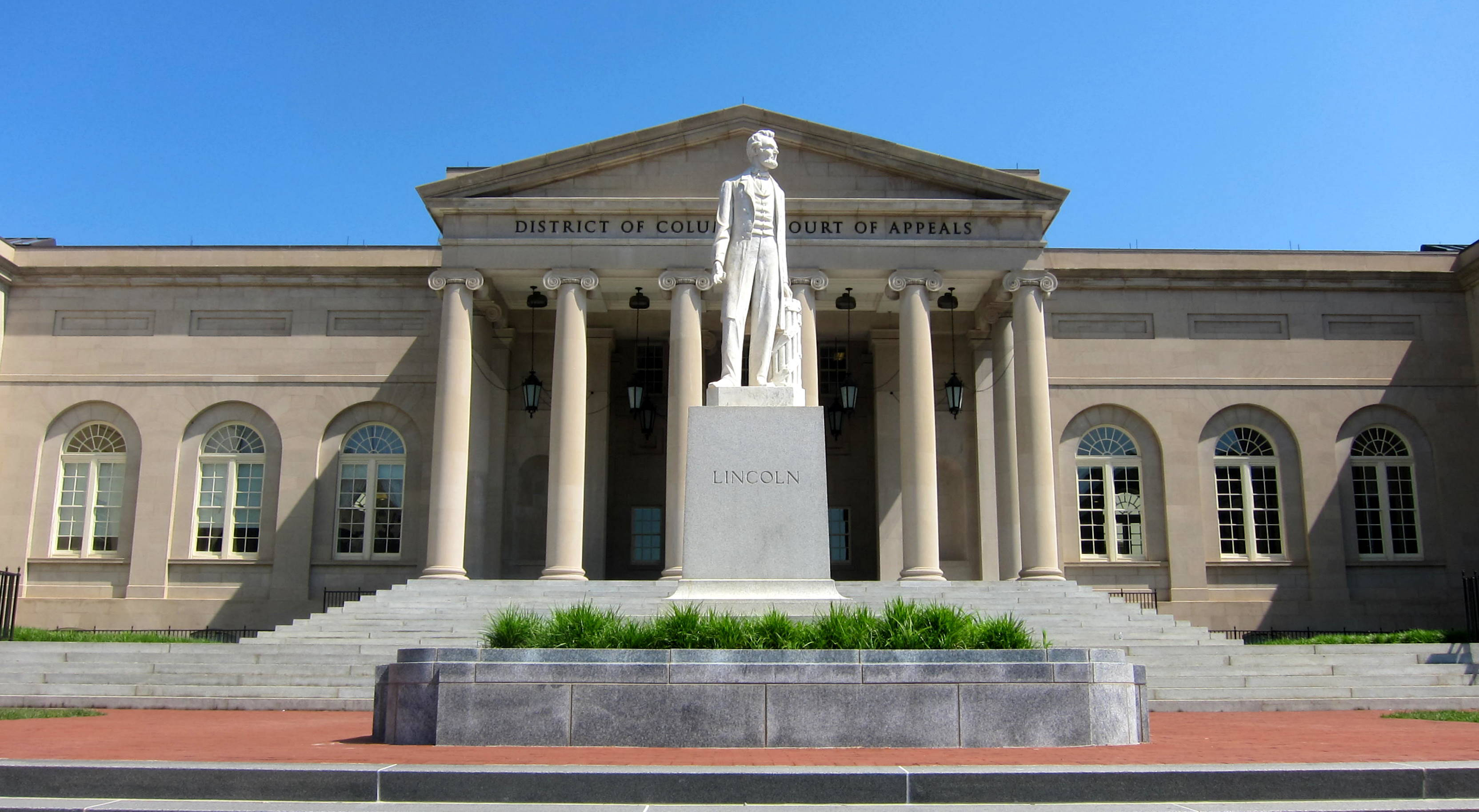
DC Court of Appeals (photo: AgnosticPreachersKid)
CURWOOD: It’s Living on Earth, I'm Steve Curwood.
On April 10, President Obama’s pledge to use his executive powers to combat global warming begins another fateful turn on Capitol Hill. That’s when the Senate Judiciary Committee begins hearings on the President’s latest nominee for the nation’s second highest court. That's the DC Circuit Court of Appeals which has vacancies dating back to 2005, when John Roberts left it to become Chief Justice of the Supreme Court.
Since 2006, partisan politics have gridlocked appointments to the Republican-dominated court, which frequently presides over legal challenges to presidential orders and agencies like the EPA. In March, Republicans filibustered the nomination of New York lawyer Caitlin Halligan for the second time, forcing her to withdraw. And on the 10th, Sri Srinivasin, the number two lawyer in the Justice Department becomes the President’s next nominee to face the Senate. Joining us now to explain why this court is so important is Tom McGarity, Law Professor at the University of Texas.
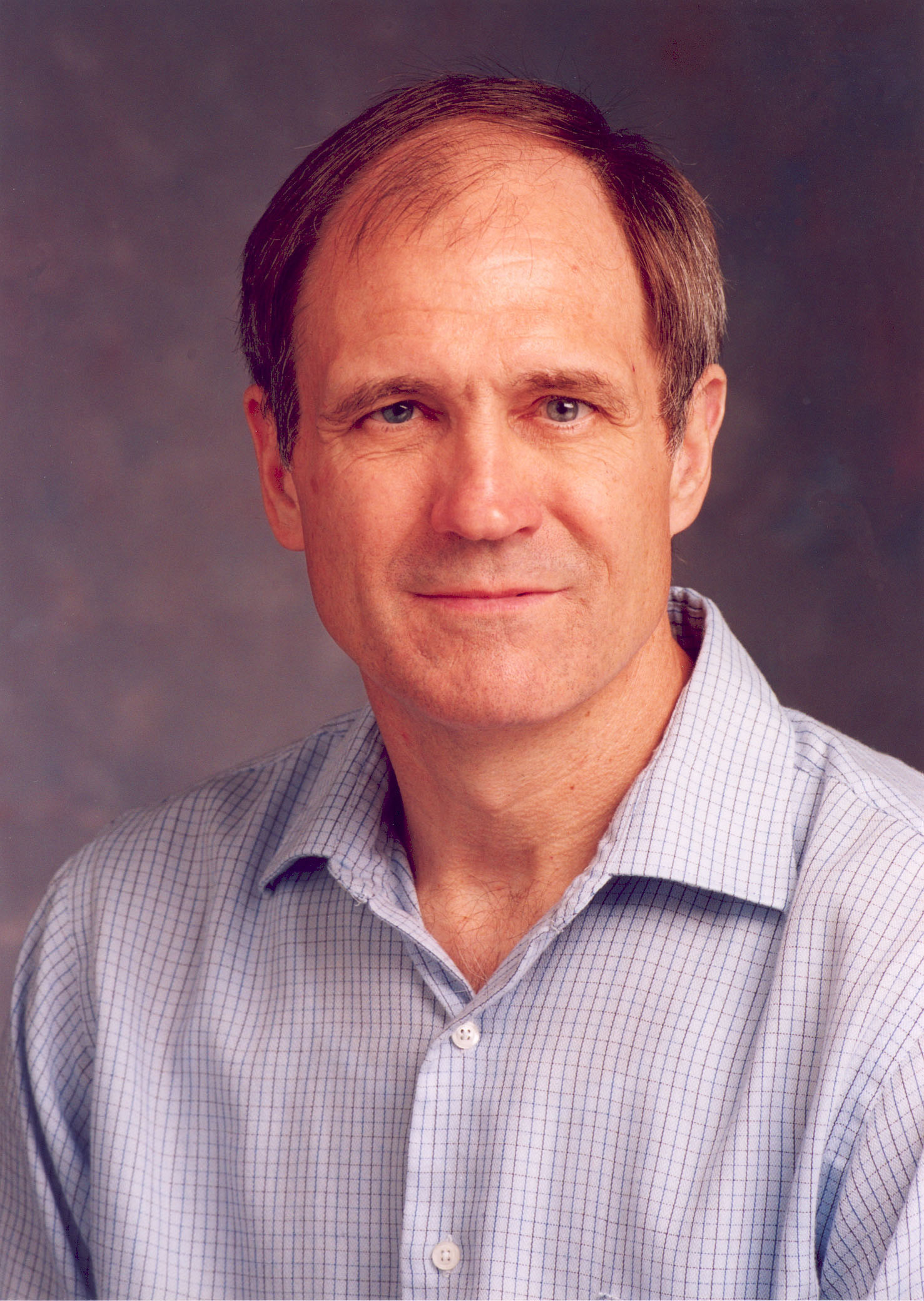
Professor Tom McGarity (photo: University of Texas)
MCGARITY: Well, any environmental regulation promulgated by the Environmental Protection Agency is subject to judicial review. It turns out that several of the statutes that EPA administers - in particular, the Clean Air Act - prescribe the DC circuit as the Court of Appeals and the only Court of Appeals to review the various actions that the EPA takes, mostly rule-making action.
CURWOOD: Professor McGarity, what's the current makeup of the DC Court of Appeals?
MCGARITY: The DC Court of Appeals has seven currently sitting judges, three of them were appointed by Democratic presidents, four were appointed by Republican presidents. But there are four vacancies; there should be 11 judges sitting. Now there are senior judges - those that have taken senior status - and they can still sit in individual cases. Of the senior judges there are six of them, five appointed by Republican presidents, and only one appointed by a Democratic president.
CURWOOD: So this is basically a fairly conservative court?
MCGARITY: Yes, I think it’s fair to say that it is these days a conservative court.
CURWOOD: Now, they're supposed to be 11 judges on this court. But only seven active ones. To what extent do people believe that the Republican Senators are deliberately slowing down appointments to the DC Court of Appeals?
MCGARITY: I think most environmental groups are confident that that's what's happening. Of course, it's up to the president to appoint judges to fill these positions, but they can only be filled with the advice and consent of the Senate. There can, of course, be legitimate reasons for opposing a nominee. But it was hard to see, to me at least, any legitimate reasons for opposing Caitlin Halligan. There was nothing in her record that suggests she wouldn’t be entirely capable of doing the job, and that she was a very accomplished and ethical person. Sometimes, it’s just done for pure political reasons. I don't want this person on the court because I think that this person is likely to rule in cases in ways I would prefer they didn’t rule.
CURWOOD: As I understand it, the caseload for this Court of Appeals for judges has almost doubled in recent years.
MCGARITY: That’s true. It has gone up significantly because we’ve had these vacancies. And the cases coming out of the DC circuit are slower and slower.
CURWOOD: Specifically, which issues involving environmental protection, do you think, could get held up by the DC Court of Appeals during the next few years.
MCGARITY: Well, there’s certainly one right now that’s outstanding before the DC circuit, and that is the mercury rule. That is a rule that regulates mercury emissions from power plants. There is another rule regulating new sources of greenhouse gases from power plants. So emissions from new power plants as proposed is a very stringent regulation which would, many think, be unreachable by coal-fired power plants, although it could be attained by gas-fired power plants. I’m confident that when that rule gets promulgated as a final rule that they will be appealed to the DC Circuit as well.
CURWOOD: What role might the DC Court of Appeals play in the Keystone decision?
MCGARITY: There will undoubtedly be a challenge. It will, of course, depend on which way the decision goes. Should President Obama decided to approve the permit for the pipeline, it'll be challenged by environmental groups, and my guess is the challenge would not be in the DC circuit. But it could be challenged by industry groups if it went the other way, and they would have their choice, but my guess is they would go to the DC circuit.
CURWOOD: In your view, how possible is it for President Obama to keep his promises of environmental protection without filling these spots on the DC Court of Appeals?
MCGARITY: Well, he can keep his promises to a limited extent by simply urging his administrators to do their jobs. But it doesn't matter how well they do their jobs if the judges on the DC circuit disagree. The delivery of justice in this country is an important thing, and if we don't have enough judges, we’re not going to get justice, or we’re not going to get good justice. So I think President Obama could make a case from his bully pulpit that the Republicans in the Senate should allow some of his nominees to go forward.
CURWOOD: Overall, what do you think about the role of the DC Court of Appeals in the regulatory process? I mean, how would you characterize it?
MCGARITY: Well, it's a very unique role. Many people call it the second most important court in the nation; with respect to the environment it unquestionably is the second most important court. Back in the early years of the Environment Protection Agency when the court had a very different composition, Judge Leventhal referred to the relationship between agencies, regulatory agencies like the EPA and the court as a partnership, that the courts and agencies were partners in pursuing justice. I’ve said on many occasions, it’s pretty easy to tell who the senior partner is!
CURWOOD: Tom McGarity is a Professor at the University of Texas Law School. Thank you so much Professor McGarity for taking this time with me today.
MCGARITY: Certainly.
Related links:
- Website of Progressive Reform, an organization which deals with environmental regulation and judicial review
- Tom McGarity’s faculty page at the University of Texas
- DC Circuit Court of Appeals website
- DC Circuit Court of Appeals April 17, 2012 decision on Mobil Pegasus Pipeline
Fish Farm Food or Dog Treats?
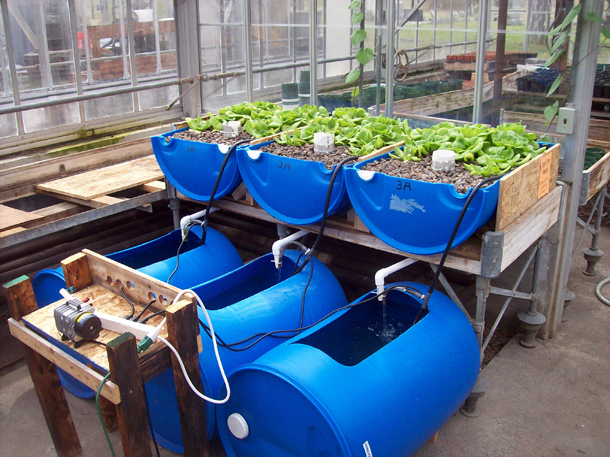
(Photo: SUNY College of Environmental Science and Forestry)
CURWOOD: Here’s an example of how the DC Circuit court of Appeals can operate. Just last year, the court reversed a Federal Energy Regulatory Commission decision regarding that Exxon Pegasus pipeline that just ruptured in Arkansas. Since the pipeline is the only one to carry tar sands crude to refineries on the Gulf coast, the Commission ruled that the Exxon pipeline should be regulated to keep it from overcharging. The three judge panel of the appeals court assigned to the case - all Republicans, including a former staff secretary to President George W. Bush - disagreed and ruled that Exxon could charge whatever the market would bear.
[MUSIC: Meshell Ndegeocello “Dead End” from Weather (Naïve Records 2011)]
CURWOOD:
When fair April with his showers sweet,
Has pierced the drought of March to the root's feet
And bathed each vein in liquid of such power,
Its strength creates the newly springing flower….
Well, you can tell some of the Living on Earth staff studied English Literature, and, appropriately enough for poetry month in April, they like to pull out their Chaucer. And to also mark the Earth month of April, we have made it a feature of our programs to go on a pilgrimage into our archives, and bring some of our stories up to date.
Today, we update a story Living on Earth's Bobby Bascomb reported a couple of years ago. It featured Michael Amadori, then a student at the State University of New York's College of Environmental Science and Forestry in Syracuse. For his thesis project, he was collecting leftovers from the school's cafeteria to turn into food for fish farming, and he took Bobby along with him.
AMADORI: This corn and bean salsa, that’s like gold right there. If I get some of that I’ll put all that in the food. The corn, beans.
BASCOMB: All the food he collects…. accept dairy… goes into a grinder to make a mush the consistency of playdough. Then he squeezes it through an extruder to make spaghetti shaped strands that are baked, dried, and broken into bite sized fish pellets.
[WALKING SOUNDS, DOOR OPENS]
BASCOMB: Amadori leads the way across campus to a small greenhouse where his thesis experiment is growing and eating.
AMADORI: In each fish tank there’s 50 gallons of water and 19 tilapia fish.
BASCOMB: There are 6 tanks in all and above each one is a 50 gallon drum cut in half and filled with gravel. That’s where Amadori cultivates the other half of his experiment.
AMADORI: Aquaponics is the combination of aquaculture and hydroponics. You raise fish in your standard fish tank like many people have at home. But instead of using those commercial filters to clean the water you pump the water up into a hydroponic grow bed which cleans the water just like the commercial filters but you also get value added produce out of it.
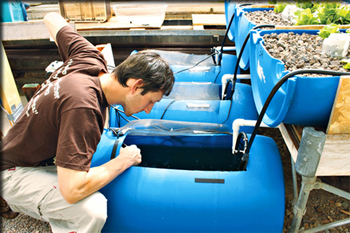
Michael Amadori checks on his fish. (Photo: SUNY College of Environmental Science and Forestry)
BASCOMB: The fish deposit their waste in the water. That waste acts as fertilizer for Bibb lettuce plants, and the water filters through the gravel to drip back to the fish.
[RUNNING WATER SOUNDS]
BASCOMB: Tilapia are omnivorous. Amadori feeds the cafeteria diet to the fish in three tanks. Fish in the other three tanks get the industry standard corn-based fish food.
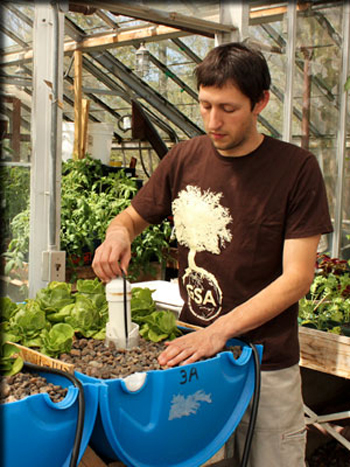
Michael Amadori tends Bibb lettuce plants, the most profitable part of his thesis project. (Photo: SUNY College of Environmental Science and Forestry)
AMADORI: I like to say that there are three main ingredients, ground corn, ground fish and ground up Flintstone vitamins. So, it’s a vitamin and mineral pre-mix and just a corn based feed and a lot of fish.
BASCOMB: It’s all that fish in aquaculture feed that worries Amadori. He says it’s not sustainable.
AMADORI: We’ve pretty much outfished all of the main commercial fish in the ocean so what we’re doing now is harvesting their food. The smaller based fish that is feed for the haddock, feed for the tuna, feed for the salmon. We’re taking their feed and grinding it up just so we can grow fish in an aquaculture setting so it’s not the most sustainable practice.
BASCOMB: Sustainable or not, fish love it. Amadori takes out a plastic container of food…
[PELLETS SHAKING IN BOX UNDER TRACK]
BASCOMB: And shakes some into the tanks. The fish immediately come to the surface and gobble it up.
AMADORI: The commercial food has been catered for decades to be exactly what the fish want to eat. It’s like they get to eat their favorite cereal every day.
BASCOMB: We’re feeding them fruit loops basically here.
AMADORI: Ha! Yup, the sweet delicious cereal they love.
CURWOOD: Well, Michael Amadori has now finished his thesis project and graduated, so we checked in with him to see how it finally worked out.
AMADORI: What we found is that the fish only ate about as half as much feed as the commercial feed. It looked to be a palatablity issue. When I put in the commercial feed, the fish devoured it in a matter of moments. When I put in my custom feed, the fish would eat it and kind of pick at it, chew at it...you know, they just ate less of it. So they ate about half as much food, and they grew about half as big in the same time frame as the commercial fish.
CURWOOD: It was like feeding them porridge instead of Fruit Loops, huh?
AMADORI: [LAUGHS] Yes, I guess it might have been a little bland for their taste and not quite what they were hoping for. Because we had a nutritionist analyze both feeds, and it’s not so much that the pellets were deficient in nutrition, it was that the fishes weren’t eating enough to get their nutrition. So it’s more like feeding them porridge instead of a full, five-course meal.
CURWOOD: What kind of ideas do you have on how you can improve on this experiment...get the fish to like your pellets a bit better?
AMADORI: One, was the selection of adding fish oil. If you’ve ever cooked with it, a very small amount is very potent. That would add more flavor, make it more palatable to fish, so the fish pellets might be used in a commercial setting.
CURWOOD: Well, how do you feel about that? Because as soon as you add commercial fish products, you’re getting away from your original idea of reducing stress on the world’s oceans.
AMADORI: Yes, I know. It’s kind of...it’s tough. But at the same time, if I’m able to offer feed that is able to produce fish just as quick as a commercial feed, that uses 80 percent less feed from the world’s oceans, it’s still a win for the world’s oceans. Is it as a big of a win as I wanted? No. Does it help reduce our demand on the wild fish populations? Absolutely.
CURWOOD: What if you sat those tilapia down and had a little chat with them and said, “hey, look, guys...what is it that did go by in the cafeteria stuff that did taste good?”
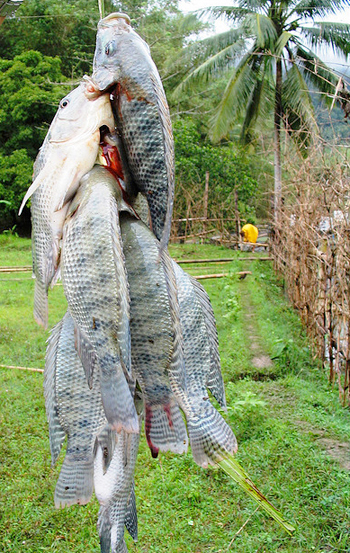
Tilapia fed on cafeteria leftovers are the other half of the experiment. (Photo: Southeast Asian Fisheries Development Center)
AMADORI: Yes, I guess that’s one option...more of a presorting, maybe specifically sorting out the fish based products would be one option to consider. The problem with that is we’re at a university dining hall. There’s maybe not enough seafood being served to produce the pellets on a large scale.
CURWOOD: I was actually thinking of a fish house. What is it...you know the Red Lobster or Jack’s Clamshack. Their compost would have a lot of fish in it.
AMADORI: Yes, that’s actually a great idea. Red Lobsters are all over the country, which would work great. One of the other ideas is the shipping, the transportation...where you’d kind of want it to be local. Every major city probably has at least 20 Red Lobster stores and other types of seafood based Long John Silver’s, things like that. We’d be partnering with them to use their food based on – quote - scraps or leftovers to make the pellets would be definitely an option.
CURWOOD: So how many of the fish you grew did you eat yourself? And how did those fish tacos taste?
AMADORI: [LAUGHS] They tasted just like the other ones. We were able to cut up a couple of them, and fry it up with some lemon and some butter. And you couldn’t taste any difference with either the commercially fed fish or the experimentally fed fish.
CURWOOD: When you were filleting the fish, there wasn’t any more fat or any difference in the fillet, visually, or taste? So how many fish are you growing now?
AMADORI: So, we’re no longer growing fish. The experiment ended in the beginning of 2012, and I defended my thesis in May of 2012 and graduated from college. And before I graduated, I was able to win a student business plan competition on the idea of my thesis - that we were going to take food from an urban setting and use it to produce food in an urban setting. So since I graduated, I ended up founding a company called Full Circle Feed. And we’ve made a slight pivot. When you’re making a feed, it’s regulated very specifically, not only with its fat, fiber, protein and starch, but we’re looking at amino acids, carbohydrates, caloric content, vitamins and minerals - much more highly regulated than say a tree. So instead of producing fish feed, but producing dog treats to start.
CURWOOD: Ah ha. And what does your dog think?
AMADORI: Oh, dogs love them. You know, dogs love people food. Their owners don’t like feeding their dogs people food, and you know, dogs tend to beg a lot when they get fed table scraps. So it’s like you’re allow your dog to have a people food treat, but without feeding them from the table.
CURWOOD: Yes, I was going to say, this is what every kid who didn’t want to eat those peas lived for. Slide the plate under the table, Rover comes over, and your plate is miraculously clean.
AMADORI: [LAUGHS] It’s funny because someone had sent me an email. It goes, “My wife and I always bicker about me feeding the dog table scraps.” So we’re helping save relationships too!
CURWOOD: Michael Amadori is a graduate now, of the State University of New York College of Environmental Science and Forestry in Syracuse, and founder of Full Circle Feed. Thanks so much, Michael.
AMADORI: Thank you so much for having me. I appreciate it.
URWOOD: And so we thought we'd better do a taste test of his new treats. And he sent a doggie bag to Bobby Bascomb, who tried them out on Byron.
BASCOMB: Hey, Bryon, want a cookie?
[JINGLE OF DOG COLLAR]
BASCOMB: Can you sit? OK. We have two kinds here. We have a bark, and something that looks like a bone. You want a bone?
[OPENS THE PACKAGE]
BASCOMB: Can you speak? Speak!
[DOG BARKS]
BASCOMB: Oh, there you go!
[CRUNCHING NOISES]
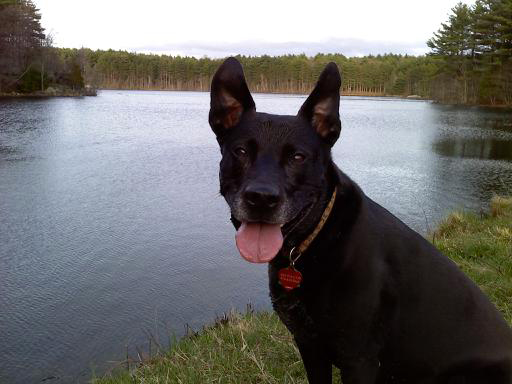
BASCOMB: Do you like those cookies? Do you like cafeteria leftovers?
[DOG BARKS]
Related links:
- Listen to the original story
- Read more about Michael Amadori’s project
- Full Circle Feed
[MUSIC: Bill Frisell “Good Dog, Happy Man” from Good Dog, Happy Man (Nonesuch Records 2000)]
Trout Are Speaking
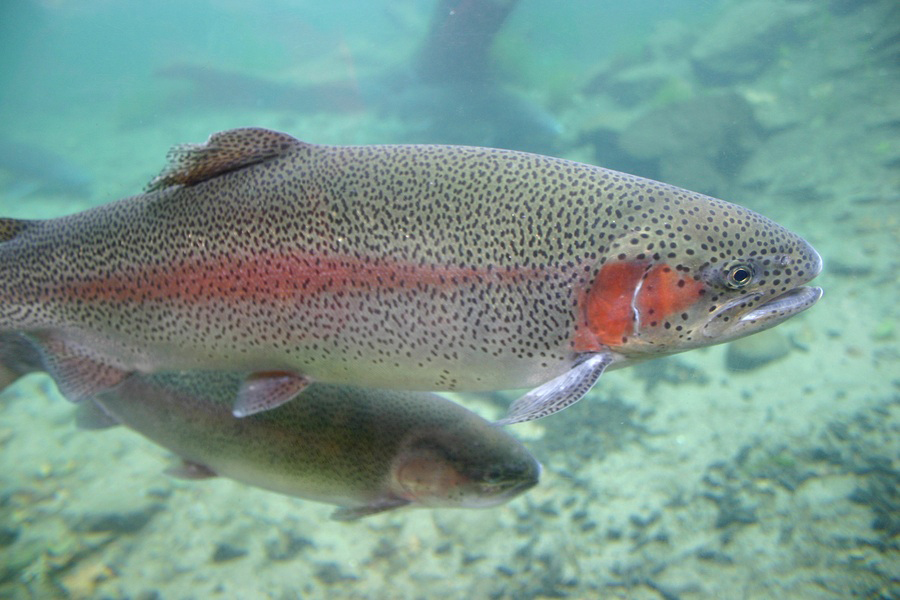
Rainbow Trout (bigstockphoto.com)
CURWOOD: We tend to think of fish as foreign. They can’t live in our world, and we can’t live in theirs. And yet when writer Mark Seth Lender stumbled across a trout stream in British Columbia he felt strongly drawn to them - in part because they seemed drawn to him.
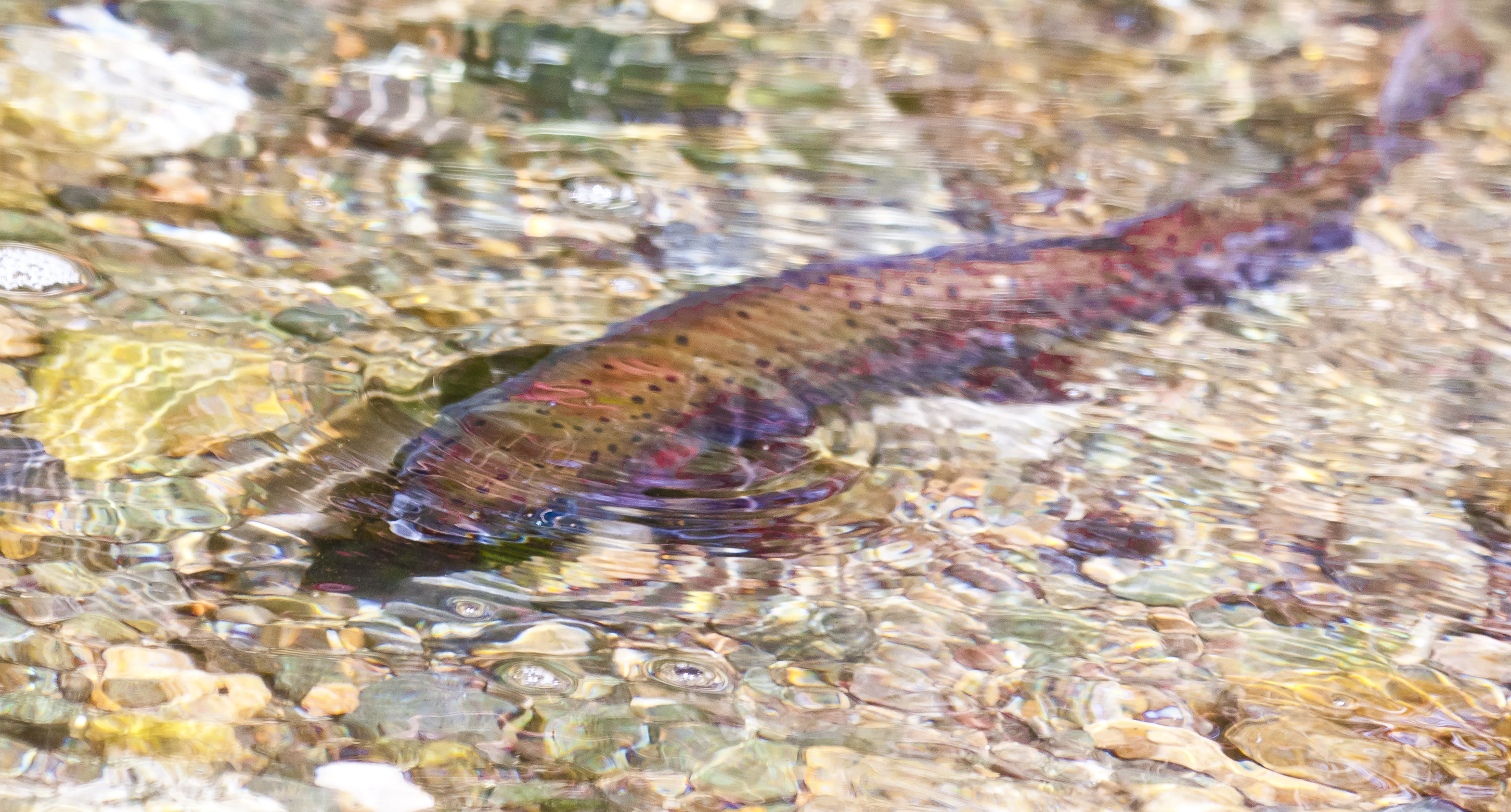
(© Mark Seth Lender)
LENDER: Trout are speaking. See their mouths moving, their gills bleating. They part their lips and brush the mirrored surface where the stream caresses the air, and each leaves a bubble there like a blown kiss. Rainbow of fishes! How the water colors as they splash and slide and scrub their scales against the river-rounded stones! (like a cat whiskering scent to the place he calls home).
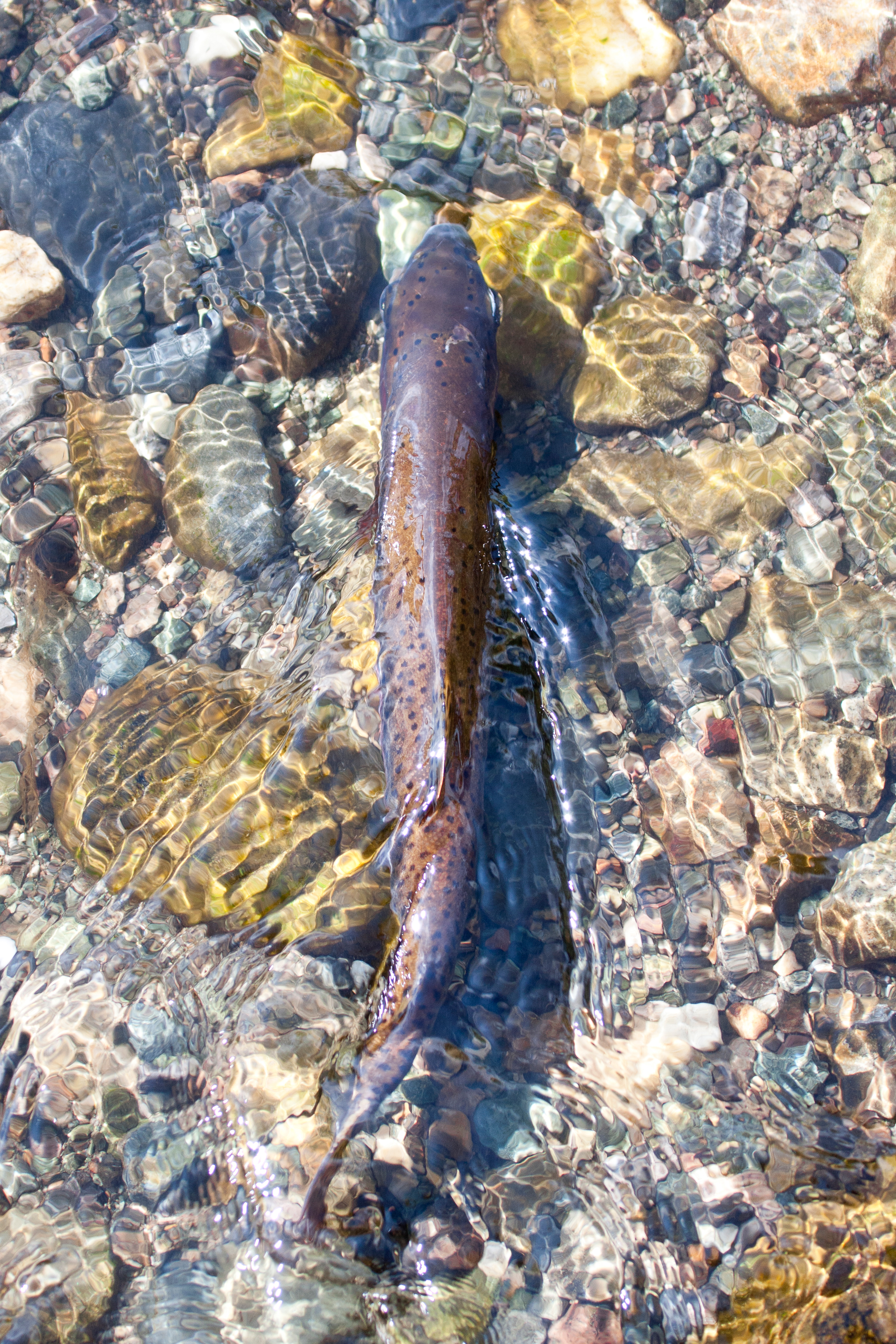
Rainbow Trout (© Mark Seth Lender)
Here, only here, where the water has speed and motion, they conjoin; they lay and fertilize their eggs here, oxygen and cleanliness in need more than tranquility (a notion as foreign to life that swims as the stratosphere). And yet, by this choice of place, almost all the labor of their life’s work will be lost. Most of their progeny carried off or swallowed. But some live, some lucky few. They find the Way. They head out to deep water where they thrive, despite the loons with their red eyes, the bald eagle who drops from the sky, the diving ducks (Bluebills, and the Goldeneyes who plunge in a row) and Snapping Turtle who hunts them from below.

(© Mark Seth Lender)
One rainbow of a trout bends, and captures me in her eye. Looks up, through water clear as a winter star. And holds me there as she swims in place and the water parts around her in her grace and the change in the light is the only trace, a shadow the current carries far, and far...
CURWOOD: Mark Seth Lender is the author of Salt Marsh Dairy, A Year on the Connecticut coast. For some of his fishy photos, swish on over to our website, LOE.org.
Related link:
Mark Seth Lender
[MUSIC: Manfred Mann “Salmon Fishing” from Odds And Sods (Petbrook Limited 2005)]
CURWOOD: Coming up, and coming soon, a car that can run on air...and no, it's not a flight of fancy. Stay tuned for more of Living on Earth.
[CUTAWAY MUSIC: “Refractions In The Plastic Pulse” from CoverArt (Concord Music 2013)]
ANNOUNCER: Funding for Living on Earth comes from the Grantham Federation for the protection of the environment, supporting strategic communications and collaboration in solving the world’s most pressing environmental problems. The Gordon and Betty Moore Federation. The Kendeda Fund, furthering the values that contribute to a healthy planet, and Gilman Ordway, for coverage of conservation and environmental change. This is PRI, Public Radio International.
New Hybrid Car Runs on Air
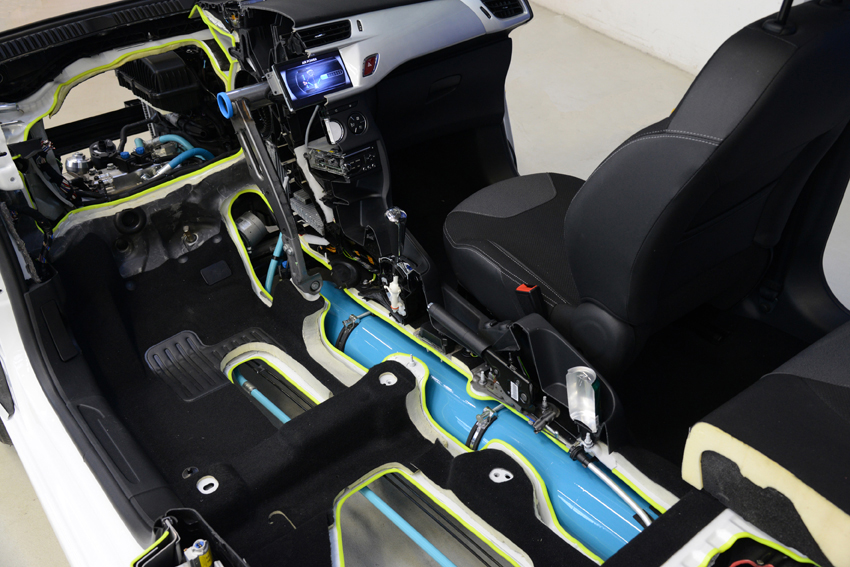
The compressed air accumulator (photo: Peugeot)
CURWOOD: It's Living On Earth, I'm Steve Curwood. We’ve seen solar cars, cars that run on vegetable oil, and now the French car company Peugeot is tapping into another abundant substance. They’ve come out with a car that runs on air. Not all the time, of course. It’s called the Peugeot Hybrid Air, and it recently debuted at the Geneva auto-show. Karim Mokaddem is an engineer with Peugeot who works on the project. He joins us now from their offices outside of Paris. Welcome to Living on Earth.
MOKADDEM: Hello.
CURWOOD: So a car that runs on air? How does that work?
MOKADDEM: OK. It may seem surprising. But it is a reality. So how does it work...the idea is that when you are driving your car in town, you need to decelerate, you need to brake. You do this in a normal car, while losing kinetic energy of the car. And what we are doing with our hybrid air technology is as soon as you’re just braking or just decelerating, you are able to store the energy very quickly. Compressed air, which is a new way of looking at energy storage in a hybrid car.
CURWOOD: What does this compressed air engine look like?
MOKADDEM: What you have is a sort of scuba tank that you have in the car. And in this scuba tank, what you’re going to do is store in the compressed air the energy that is normally lost when you are braking or accelerating. In electrical cars, you’re going to store the energy in batteries, and what we are doing in a hybrid air car, is storing quickly, recovering quickly, storing quickly, recovering quickly. It’s completely a different mindset. We’re able to use this energy very rapidly and very frequently. It allows us to have a drastic fuel consumption reduction in urban situations of 45 percent which is a really, really good figure.
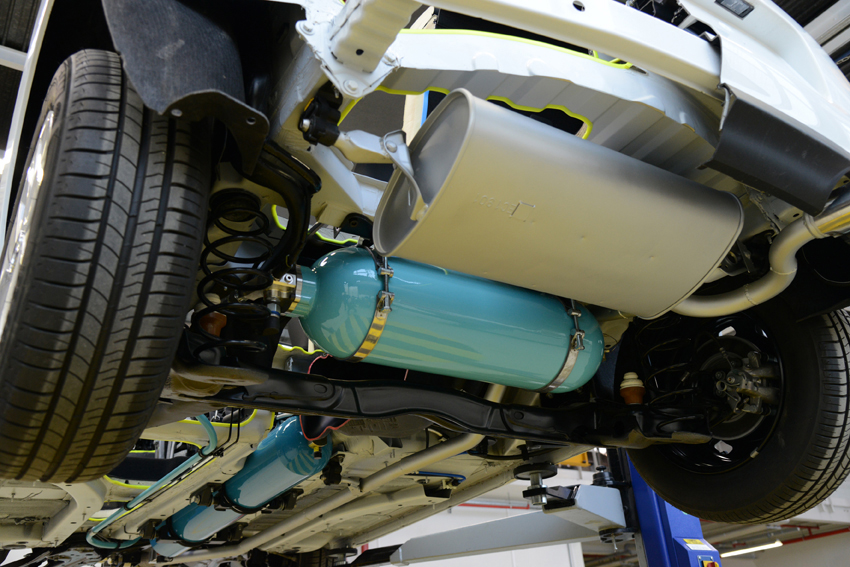
The compressed air “scuba tank” (photo: Peugeot Citroen)
CURWOOD: So this car is designed for the city rather than the highway, I gather. The mileage isn’t so great on the highway where you don’t have to brak very often.
MOKADDEM: Yes, exactly. That is the point. The potential of this technology is really great in urban situations. When you’re riding your car in the motorway, what will happen is that you’ll use what we call gasoline mode. In this mode, the internal combustion engine will act exactly as in a normal car. And you will drive the car exactly the same way you drive a normal car with a gasoline engine.
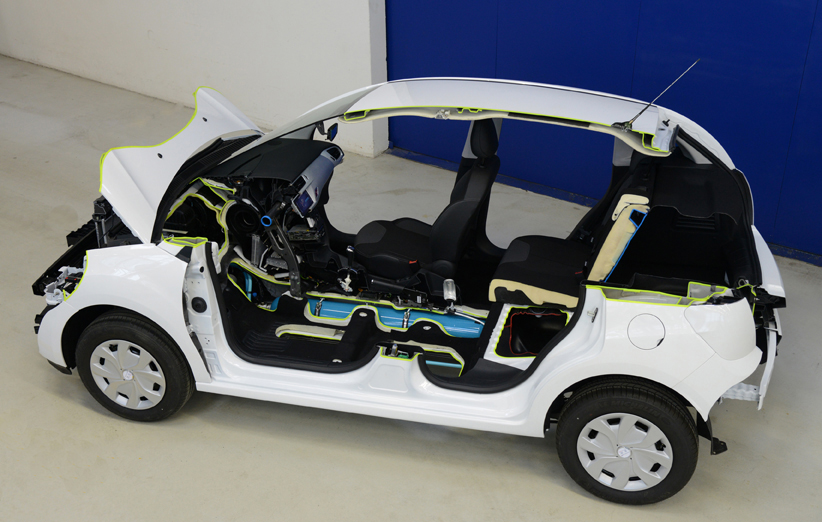
The compact Peugeot Hybrid Air prototype (photograph: Peugeot)
CURWOOD: How many miles to the gallon are we talking about here?
MOKADDEM: We are able to achieve up to 80 miles per gallon. It’s a real good result because it’s something that is not reached today by any other hybrid technology for this kind of segment.
CURWOOD: How fast can it go?
MOKADDEM: How fast? OK. There’s no... Exactly the same as normal car. So you can on the European motorway, drive up to 130 kilometers per hour without any troubles, and of course, you can go much more higher if you want, but it’s not allowed here.
CURWOOD: [LAUGHS] Alright. Well. What does it sound like when you’re using the compressed air?
MOKADDEM: This is a great question. When you’re driving your car, you don’t have this magic silence that electrical hybrids can provide. What will happen is you will have a very dedicated sound signature when you’re using your car with these hydraulic components. But it’s not something that is difficult to handle in a normal situation when you’re driving your car in the city.
CURWOOD: So it’s not so quiet. It’s sort of loud. Is it a whooshing noise? Or is it a grinding noise?
MOKADDEM: No it’s not. I mean, it’s very difficult to explain. You would have to drive the car because it’s very difficult - it’s not an automotive sound.
CURWOOD: I’m game. Bring one of these forward. I’ll drive it right now.
MOKADDEM: [LAUGHS] This is something we can manage.
CURWOOD: So some people complain that building traditional hybrids, Toyota Prius comes to mind, is not all that environmentally friendly. How would the hybrid air compare in that department?
MOKADDEM: Yes, this is a good point. The parts we are using in this technology are fully recyclable. This is a very important point which you cannot today achieve with batteries and electrical parts, which means it is much more ecologically friendly than other technologies.
CURWOOD: So some people complain building traditional hybrids, Toyota Prius comes to mind, is not all that environmentally friendly. How would the hybrid air compare in that department?
MOKADDEM: Yes, this is a good point. The parts we are using in this technology are fully recyclable. This is a very important point which you cannot today achieve with batteries and electrical parts, which means it is much more ecological friendly than other technologies.
CURWOOD: Talk to me as to how much this will cost. You can tell me in Euros.
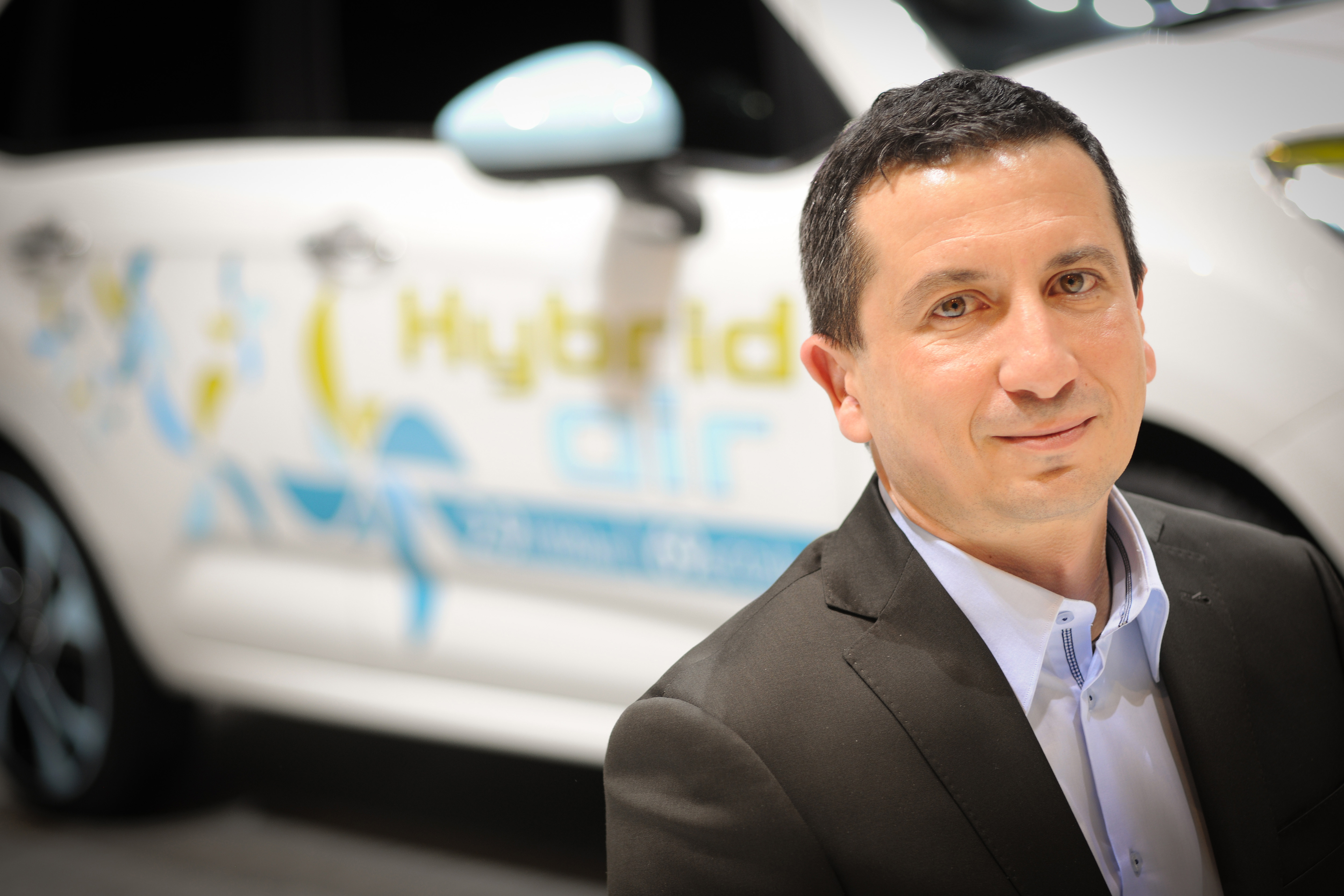
Peugeot engineer Karim Mokaddem (photo: Peugeot Citroen)
MOKADDEM: It’s between 15,000 Euros and 20,000 Euros.
CURWOOD: So how does that compare to a traditional, a conventional gas electric hybrid, or a diesel electric hybrid?
MOKADDEM: The hybrid technology is half the cost of the electric hybrid technology that we are deploying on the European market today.
CURWOOD: Half the cost?
MOKADDEM: Yes.
CURWOOD: That’s impressive. Now, what do you think the future holds for this technology?
MOKADDEM: The first point is that we will have to meet in the next years, the 2020 regulations in terms of CO2 and there is a real need to have new technology that will be able to fulfill these challenges. The second point is that today we don’t think that only one technology or a few technologies will be able to make it. So, for me, this new way of looking at hybridization is probably a promising way to say, “how can we address this growing market with very simple and robust technologies that can be affordable to all of us?”
CURWOOD: And of course, this is not a new technology at all, compressed air has been around as long as...
MOKADDEM: Exactly. In fact, this is the key point. If you look at the parts, very independently, there’s nothing new. What is new is the way you are combining all these parts in a small car, and the way you are controlling the system and the energy that’s in the car. There’s nothing new in the parts we are using in these technologies.
CURWOOD: Karim Mokaddem is an Engineer at Peugot. Thank you so much for joining us.
MOKADDEM: Thank you very much. And thank you for your interest in our technology.
Related links:
- Peugeot Hybrid Air
- Guardian article about the Hybrid Air’s debut at the Geneva Auto Show
[MUSIC: Hugh Masakela “Ngene-Ngena” from Beatin’Aroun de Bush (Sony Music 1992)
Happy Birthday Hughie (04/04/1939)]
Greenland Melt Music
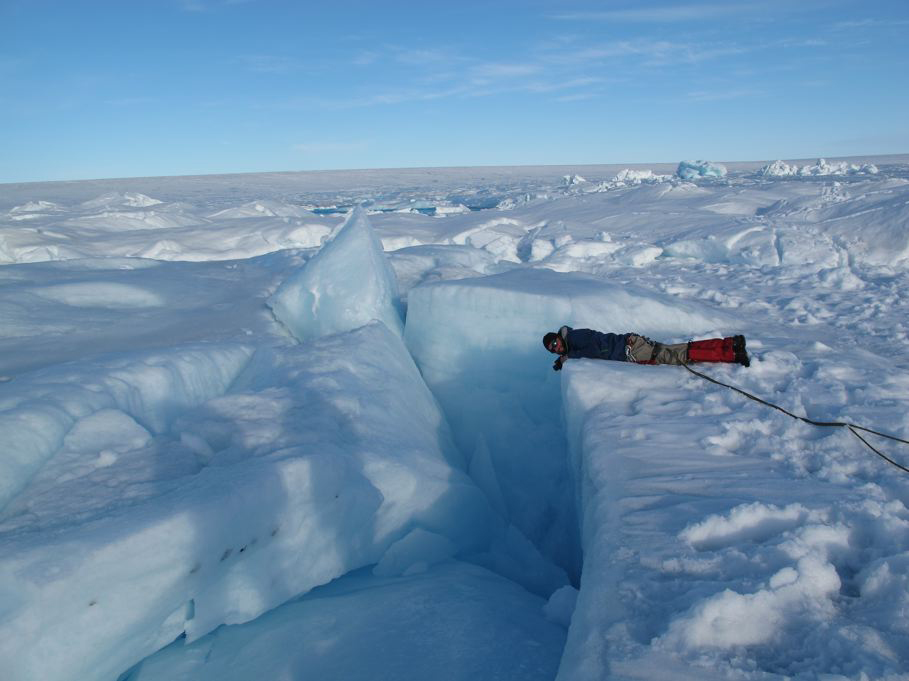
Marco Tedesco peers into a crack in the ice sheet (photo: Polar Seeds)
CURWOOD: Well, a team of scientists and artists at the City College of New York has come up with a way to listen to glaciers melting. It’s all part of a multimedia exhibit about Greenland’s melting ice sheet. To help people understand the science involved, they’ve included photography, video, and a musical method of reflecting the reality of the melting ice. Living on Earth’s Emmett FitzGerald has the story.
FITZGERALD: Every year, Marco Tedesco travels to Greenland to collect data on the annual melt of the ice sheet. He’s a snow and ice scientist, but he has another passion.
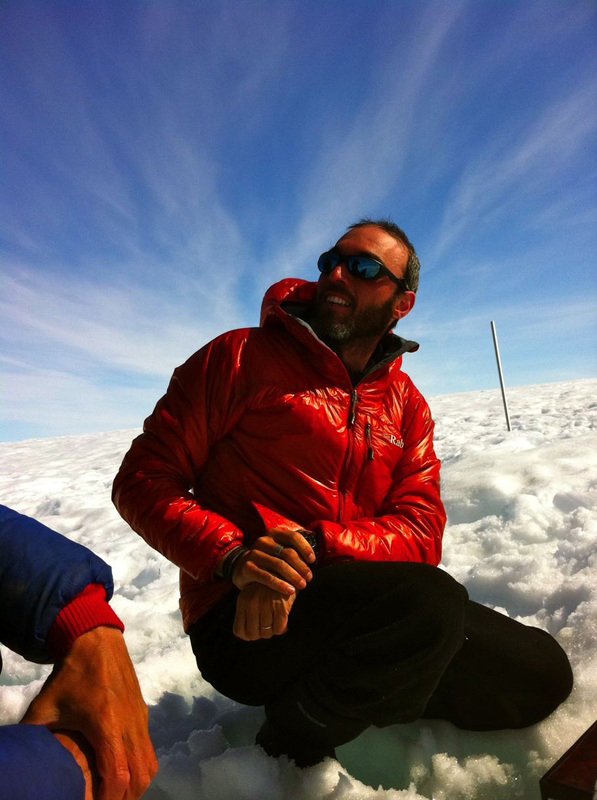
CCNY professor Marco Tedesco in Greenland (photo: Polar Seeds)
TEDESCO: The thing I love more after science, or with science, besides my family, is really music.
FITZGERALD: So when Professor Tedesco found out about City Seeds, a grant program at the City College of New York that funds collaboration between professors from different fields, he saw a chance to combine those two interests. He went to the Music department looking for someone who could turn his data on Greenland’s melting ice into music.
PERL: I’d never done anything like this before at all.

CCNY Music Professor, Jon Perl (photo: CCNY)
FITZGERALD: That’s Jonathan Perl, a musicologist at CCNY. Although he had no experience sonifying scientific data, Professor Perl was up for the challenge. He did some research of his own.
PERL: I attended the international conference of auditory display and met people who were immersed in representing scientific data with sound.
FITZGERALD: Marco Tedesco says that when it comes to data on Greenland’s melting ice, one of the most important factors is albedo, that’s the capacity of a surface to reflect or absorb solar radiation.
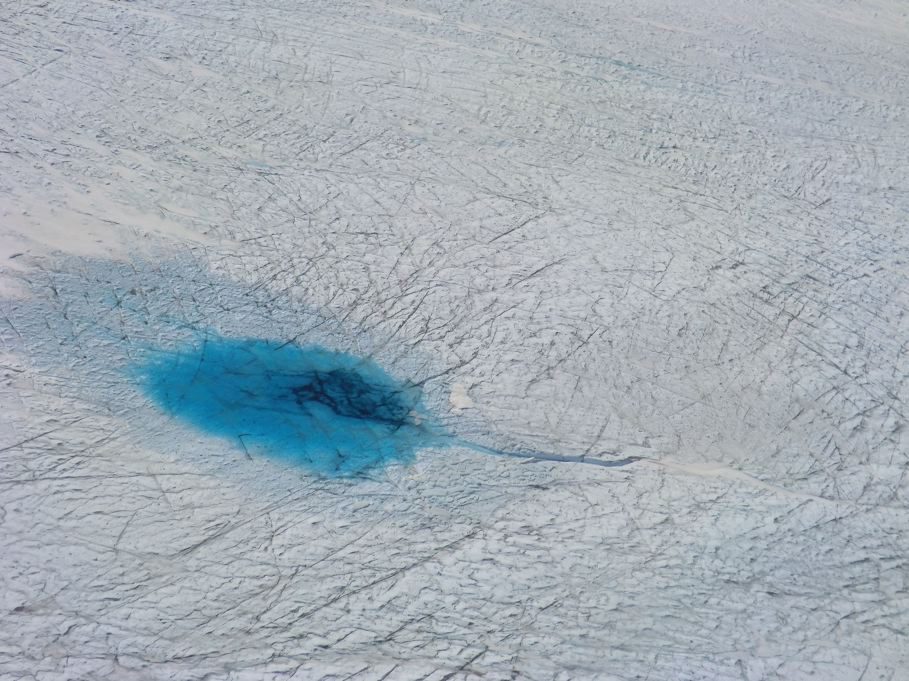
Exposed ice on the Greenland ice sheet. Darker ice surfaces cause the ice sheet to absorb even greater solar radiation. This is called the albedo effect. (photo: Polar Seeds)
TEDESCO: All of us we know albedo in a very empirical way. If you walk in the sun and you’re wearing a black shirt, you’ll get much warmer sooner than your buddy wearing a white shirt.
FITZGERALD: During summer in Greenland, the layer of fresh white snow on the surface begins to melt, exposing older, grayer snow, and eventually blue ice. As the island’s surface grows darker, it absorbs more solar radiation, increasing the overall melt.
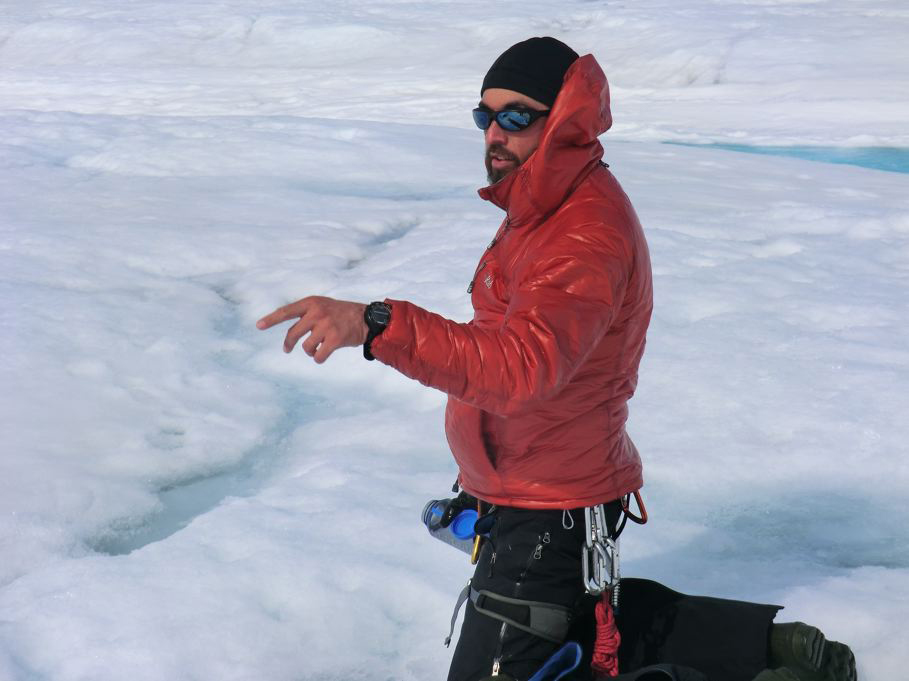
Marco Tedesco wading through glacial melt water (photo: Polar Seeds)
TEDESCO: You can see this really as a Shakesperian tragedy. You have the temperature that is a major killer and is trying to kill Lady Greenland. By itself it’s not strong enough, but then you have Mr. Albedo that kicks in right, and then the two guys are accomplices.
FITZGERALD: Rising global temperatures and albedo create a feedback loop that is devastating Greenland’s ice sheet. To illustrate this, Jon Perl sonified albedo and melt rate data. In the mid-1990s, the music sounds fairly calm.
PERL: The technique I used in sonification is called parameter mapping and it basically means representing some aspect of changes in the data with some changes in the sound.
[MUSIC: ALBEDO CHOIR VS MELT RATE GEIGER COUNTER]

The Polar Seeds team setting up their exhibit at CCNY (photo: Jon Perl)
PERL: Albedo, I decided to represent that by increasing the intensity of the lower frequencies of a male bass choir. So that as the albedo worsens, as the ice gets darker and is unable to reflect the sunlight the lower voices become more and more intense relative to the high voices in this droning chord.
[MUSIC CONTINUES UNDER NARRATION]
And the Geiger counter is a well known effect where these very annoying beeps and clicks get louder and more frequent and intense. I decided to use that effect to represent increasing amounts of the ice sheet melting over Greenland.
[MUSIC CONTINUES]
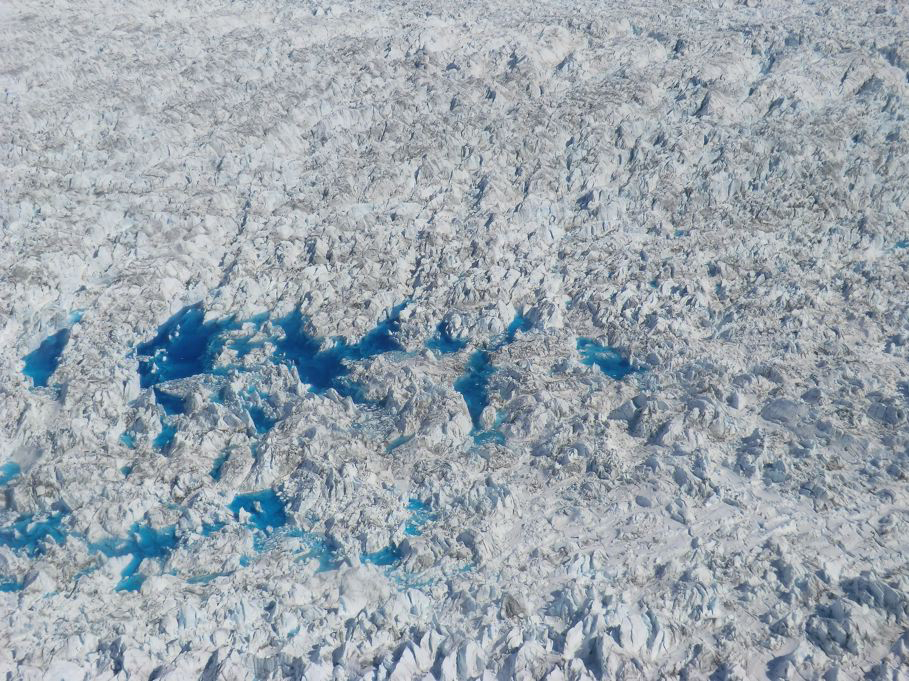
Arial view of Greenland glaciers (photo: Polar Seeds)
It’s a pretty serious problem that’s happening. And I thought more annoying would get the point home.
I think we must be getting into the 2000s now and you can hear the melting is increasing. It gets quite intense. 2012 is a mammoth year.
[MUSIC PEAKS IN INTENSITY AND STOPS]
FITZGERALD: There was record-braking melt in 2012. Professor Tedesco says it really stands out…
TEDESCO: like a giant basketball player, walking around Times Square.
FITZGERALD: Almost the entire surface of Greenland experienced melting in summer 2012. The overall melting period lasted two months longer than average, and Greenland’s melt alone added a millimeter to the global sea level. To highlight the problem, Professor Perl composed a full summer melt score. It documents the extent of Greenland’s melt over time.

Last summer, Greenland experienced melting over 97% of its surface (photo: Polar Seeds)

Greenland’s melting ice sheet contributed a millimeter to global sea level rise last summer alone (photo: Polar Seeds)
[MUSIC: FULL SUMMER MELT SCORE, RUNS UNDER NARRATION]
PERL: I had a lot of fun with this one. It was pretty challenging to do technically but I figured out a way to compose music so that I could have a continuous performance with a lot of notes that are happening simultaneously. It’s very busy and very frenetic. I took the data, which is the amount of melting, and I have it actually controlling how many of these notes can sound at any given moment.
[MUSIC DIES DOWN TEMPORARILY]
PERL: There was a spot with very minimal melting. That was the lowest amount of melting that happened in that time scale. So, essentially when the melting values are low it suppresses the playback of most of the notes. And then as the melting values rise in real time it allows more notes to be allowed basically through this gate, to be allowed to play.
[MUSIC CONTINUES]
PERL: The time scale we are hearing here is three seconds represent about a year’s worth of change. It’s not till the very end, which we are getting pretty close to, 2013, where you can pretty much hear the full musical score where all the notes are playing.
PERL: I’d actually done a prior version of this before I had the 2012 values, and the whole arrangement was kind of more intense, but as soon as I rescaled everything and added 2012, all the other years kind of paled in comparison.
[MUSIC PEAKS AND STOPS]
FITZGERALD: Jon Perl has worked in all sorts of musical styles - from experimental jazz, to rock and roll. But he says he’s never heard anything quite like his glacial melt music. That may be because he had an unusual collaborator - the data.
PERL: I mean I know that I didn’t compose this piece entirely, its kind of composing itself by having the melting values determine what notes are playing at any given time and what notes aren’t.
FITZGERALD: In the end, the two professors presented the sonifications as part of an exhibit they called PolarSeeds. For Professor Tedesco, it was an exciting change of venue for his research.
TEDESCO: Usually my work finalizes in papers, publications, or conferences. So to be able to put together my results in an exhibit was very satisfying for me.
FITZGERALD: He hopes the songs, photos, and videos will reach a broader audience than a scientific paper, and thinks that could be a good thing. Greenland’s melting ice sheet is fast becoming a serious global problem.
TEDESCO: It’s very important for us to understand that what happens in the Arctic, what happens in Greenland doesn’t stay really in Greenland.
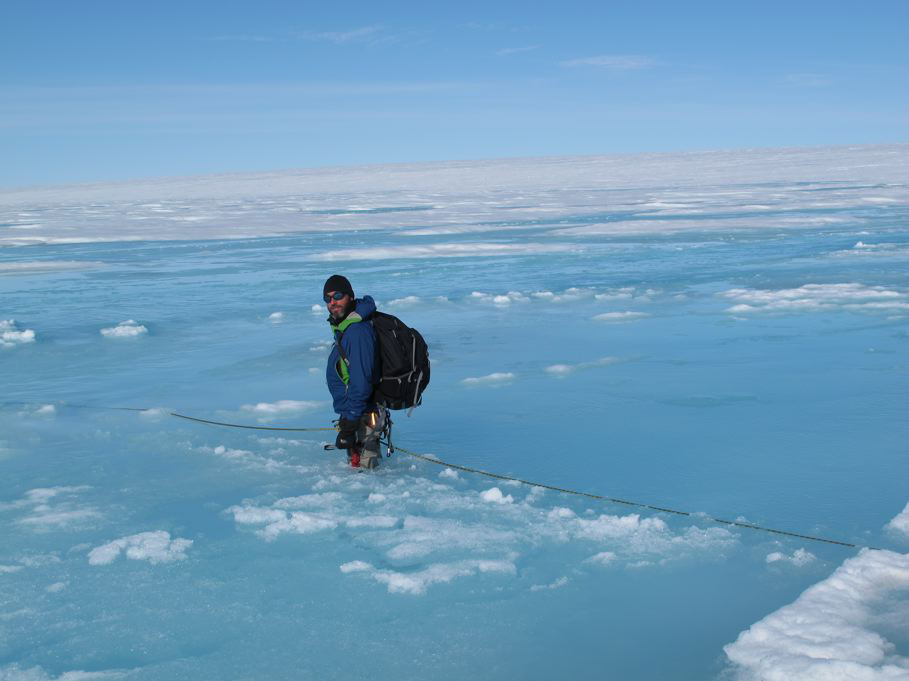
Marco Tedesco wading through glacial melt water (photo: Polar Seeds)
FITZGERALD: Greenland’s contribution to sea level rise will affect people living near coasts all around the world. Professor Perl hopes the glacial melt music can affect how people think about global warming and its impacts.
PERL: When you take the time to actually listen to it, you experience what’s actually happening in a way that is more visceral, and has a different kind of impact then if you just look at a graph.
FITZGERALD: There are thousands of global warming graphs and statistics out there, but given what 2012 sounded like, hearing climate change may bring the message home.
For Living on Earth, I’m Emmett FitzGerald.
Related links:
- Polarseeds website
- Marco Tedesco’s website Greenland Melting
- Marco Tedesco’s faculty page
- Jonathan Perl’s faculty page
- Video illustrating the albedo effect
[MUSIC: All Sonifications by Jonathan Perl]
CURWOOD: On the next Living on Earth, it's not the trees that make cold boreal forests round the world soak up carbon, but something smaller.
CLEMMENSEN: The small guys in the soil that you can't even see, unless they produce nice mushrooms that you can pick, they play a big role in boreal forest ecosystems.
CURWOOD: The vital role of fungi in fighting climate change - that's next time on Living on Earth.
CURWOOD: Living on Earth is produced by the World Media Foundation. Naomi Arenberg, Bobby Bascomb, Emmett Fitzgerald, Alicia Juang, Qainat Khan, Helen Palmer, Adelaide Chen, James Curwood, Jennifer Marquis and Gabriela Romanow all help to make our show. Jeff Turton is our technical director. Alison Lirish Dean composed our themes.
You can find us anytime at LOE.org. And check out our Facebook page - it’s PRI’s Living on Earth. And we tweet from @LivingOnEarth. I'm Steve Curwood. Thanks for listening.
ANNOUNCER: Funding for Living on Earth comes from Stonyfield Farm, makers of organic yogurt, smoothies, and more. Stonyfield, working to produce healthy food for a healthy planet. Stonyfield.com. Support also comes from you our listeners. The Go Forward Fund and the Town Creek Foundation.
ANNOUNCER 2: PRI Public Radio International.
Living on Earth wants to hear from you!
Living on Earth
62 Calef Highway, Suite 212
Lee, NH 03861
Telephone: 617-287-4121
E-mail: comments@loe.org
Newsletter [Click here]
Donate to Living on Earth!
Living on Earth is an independent media program and relies entirely on contributions from listeners and institutions supporting public service. Please donate now to preserve an independent environmental voice.
NewsletterLiving on Earth offers a weekly delivery of the show's rundown to your mailbox. Sign up for our newsletter today!
 Sailors For The Sea: Be the change you want to sea.
Sailors For The Sea: Be the change you want to sea.
 The Grantham Foundation for the Protection of the Environment: Committed to protecting and improving the health of the global environment.
The Grantham Foundation for the Protection of the Environment: Committed to protecting and improving the health of the global environment.
 Contribute to Living on Earth and receive, as our gift to you, an archival print of one of Mark Seth Lender's extraordinary wildlife photographs. Follow the link to see Mark's current collection of photographs.
Contribute to Living on Earth and receive, as our gift to you, an archival print of one of Mark Seth Lender's extraordinary wildlife photographs. Follow the link to see Mark's current collection of photographs.
 Buy a signed copy of Mark Seth Lender's book Smeagull the Seagull & support Living on Earth
Buy a signed copy of Mark Seth Lender's book Smeagull the Seagull & support Living on Earth

